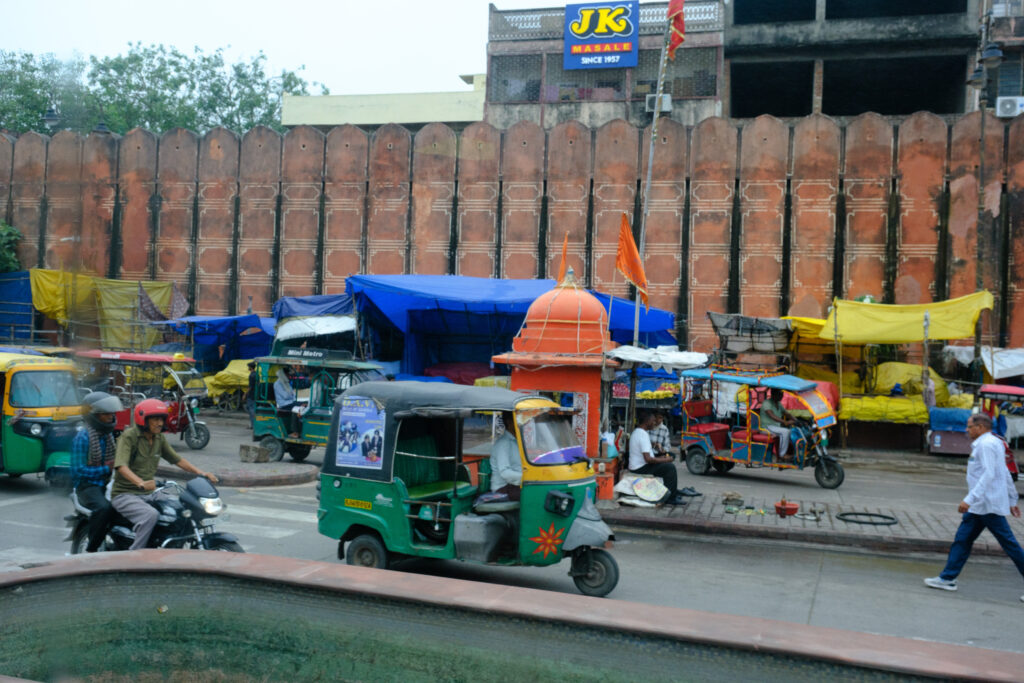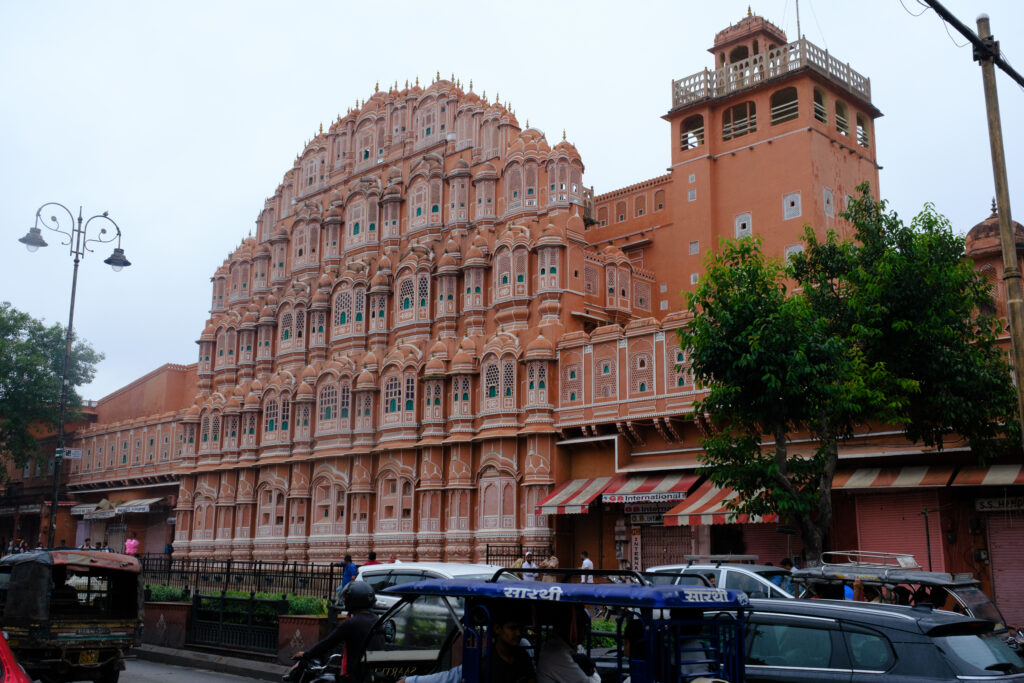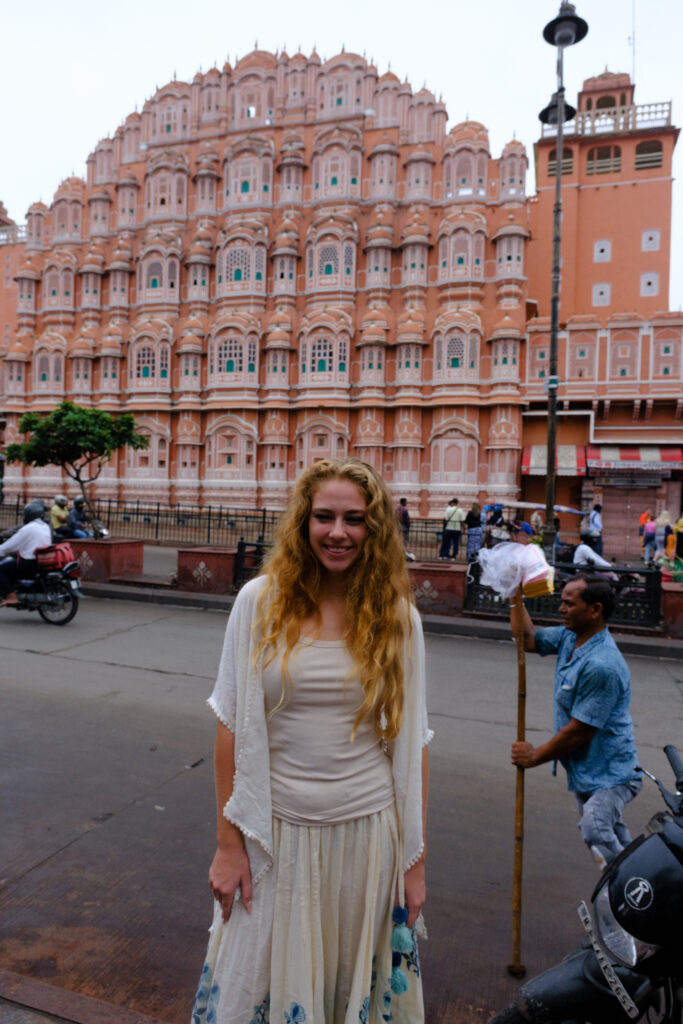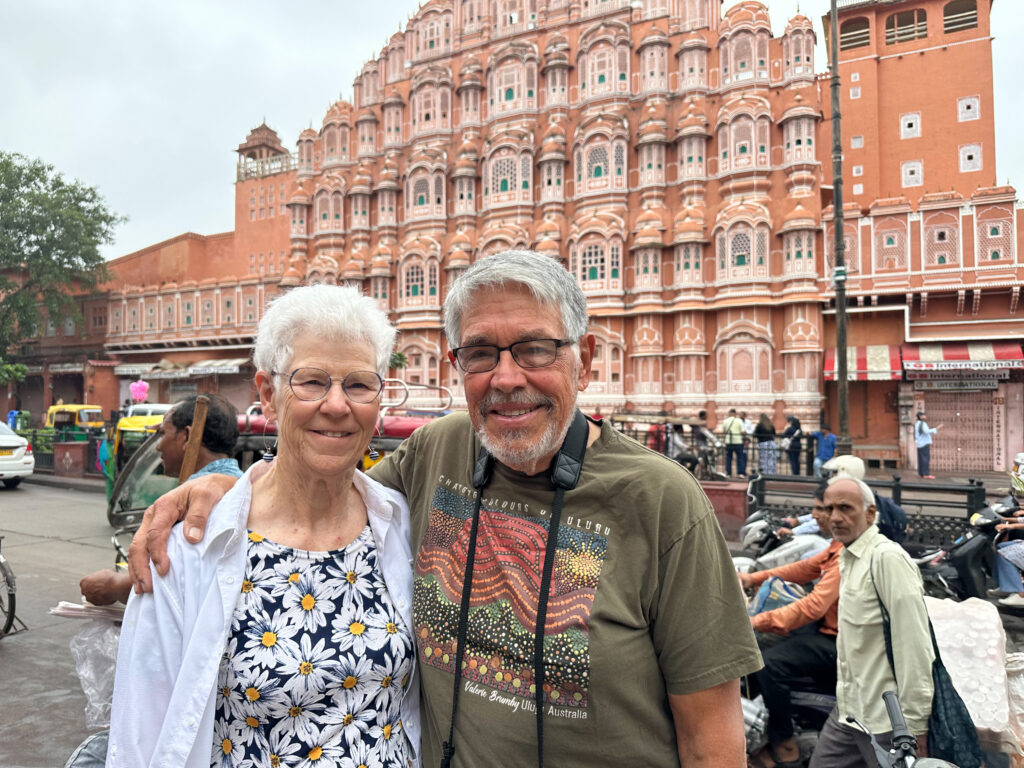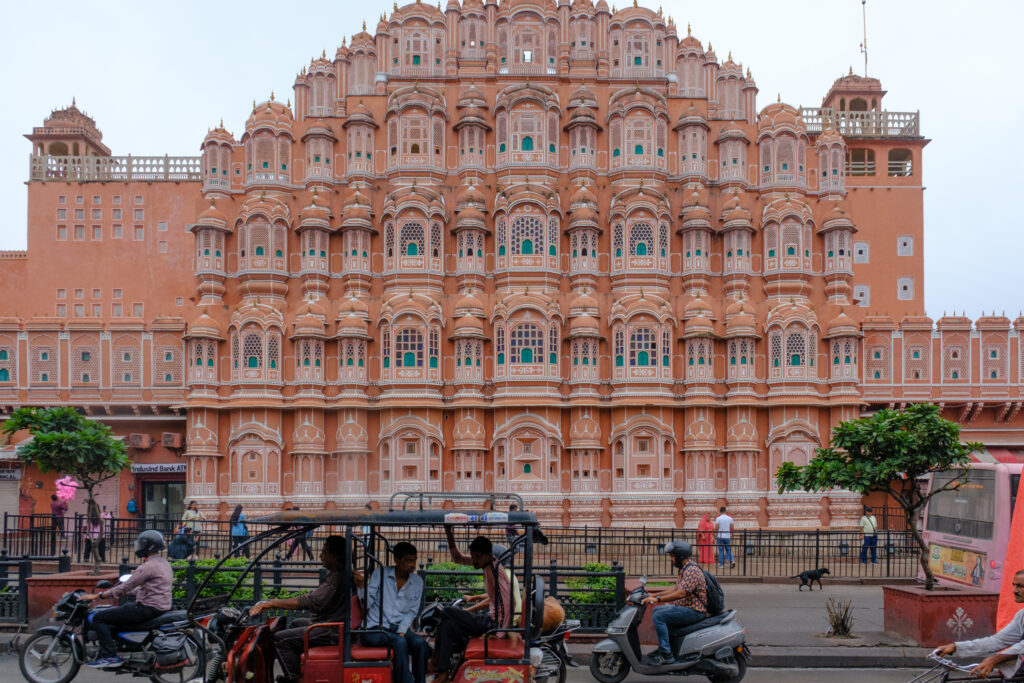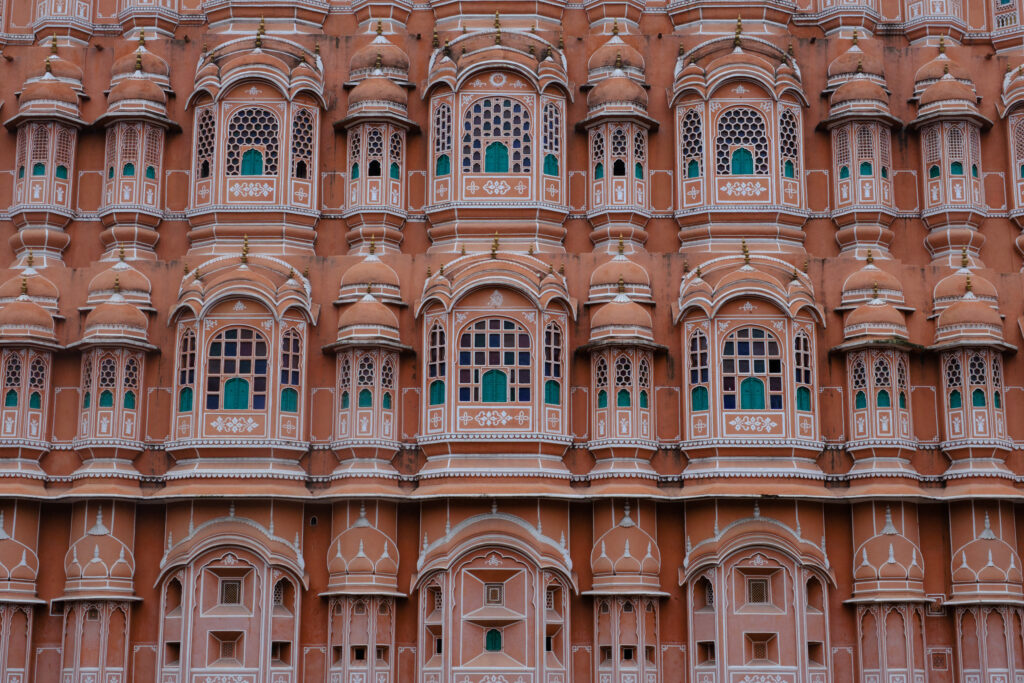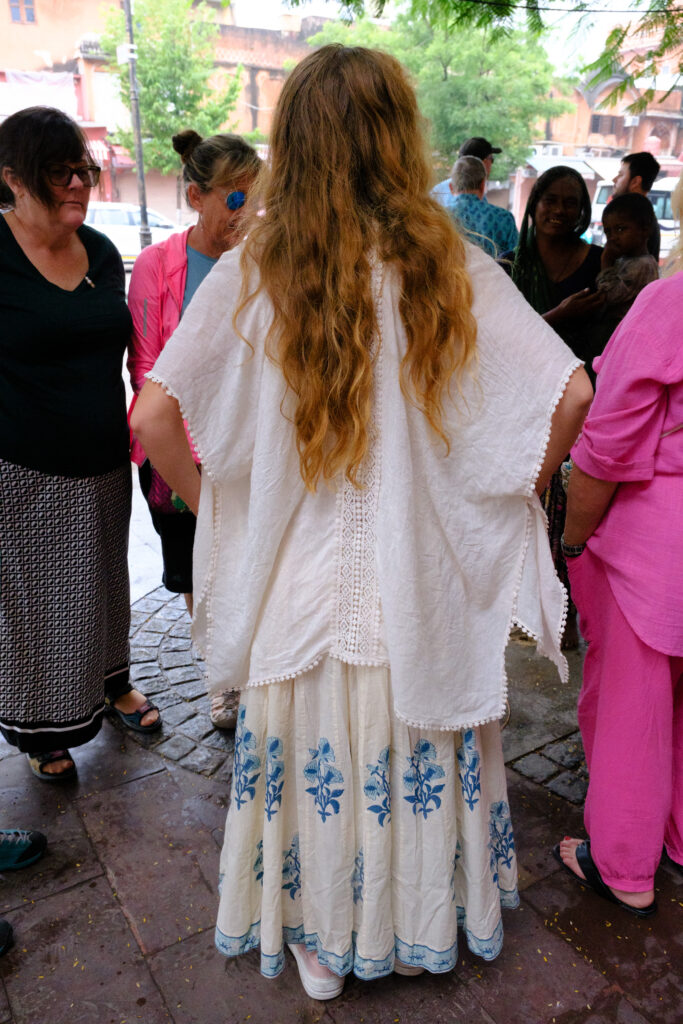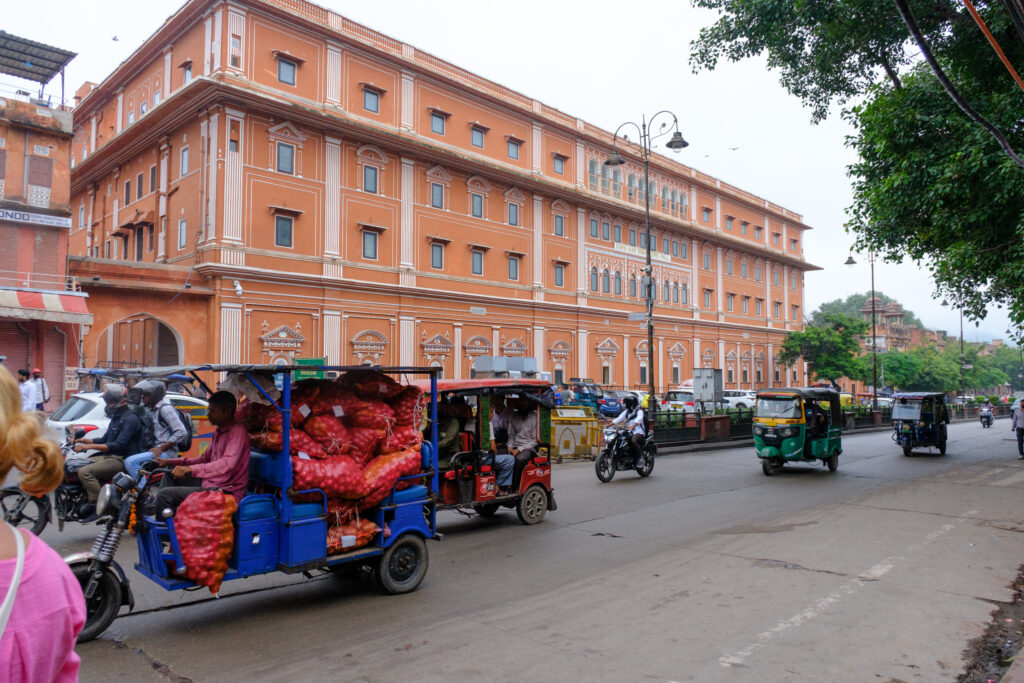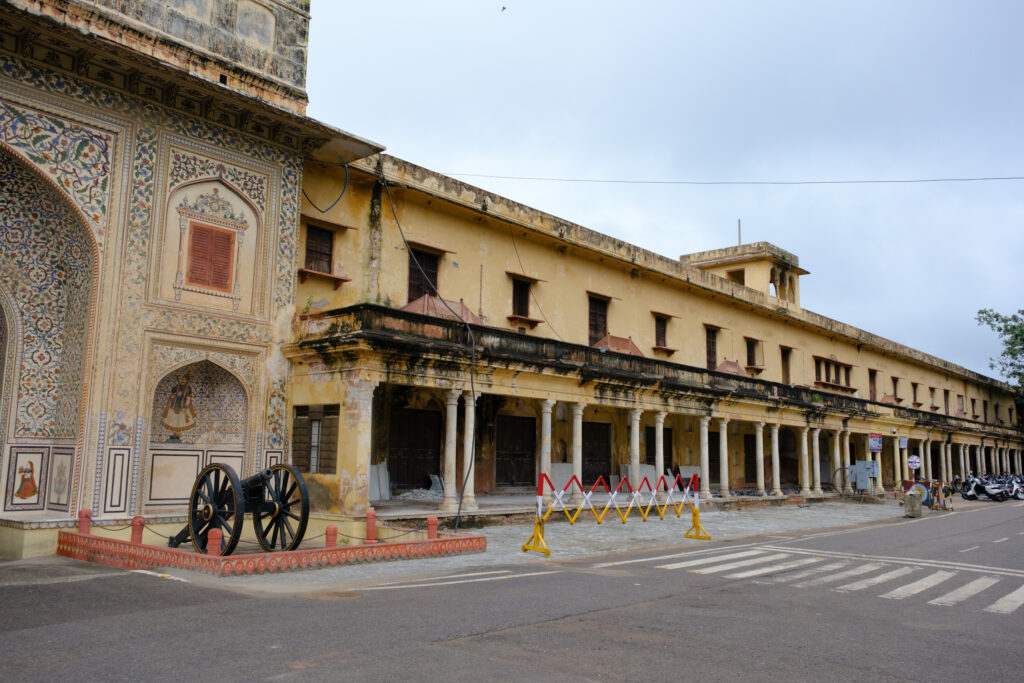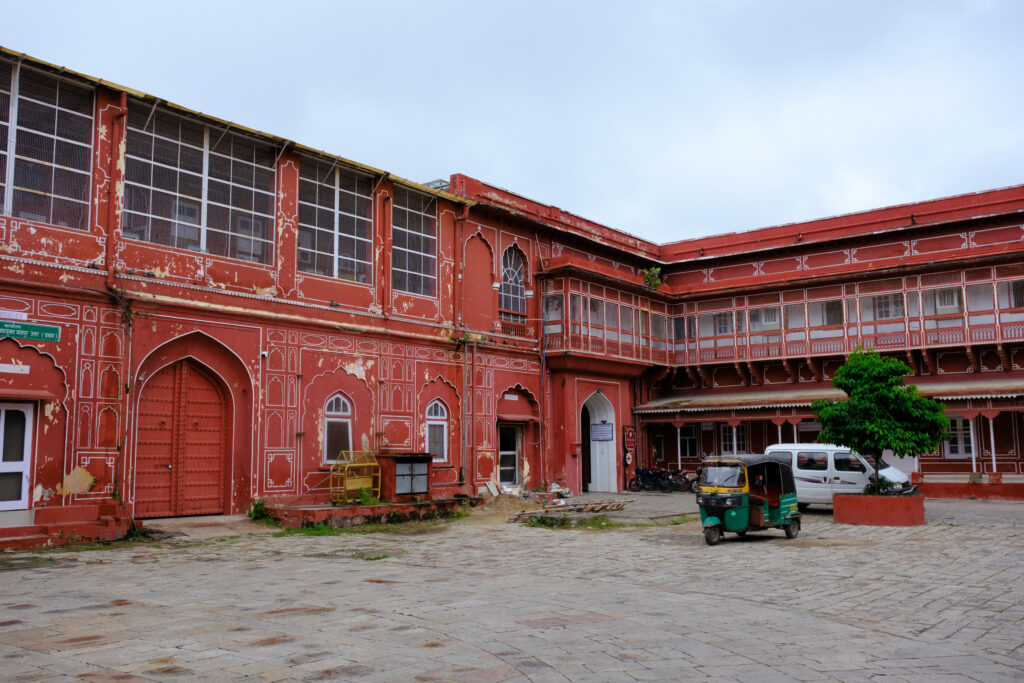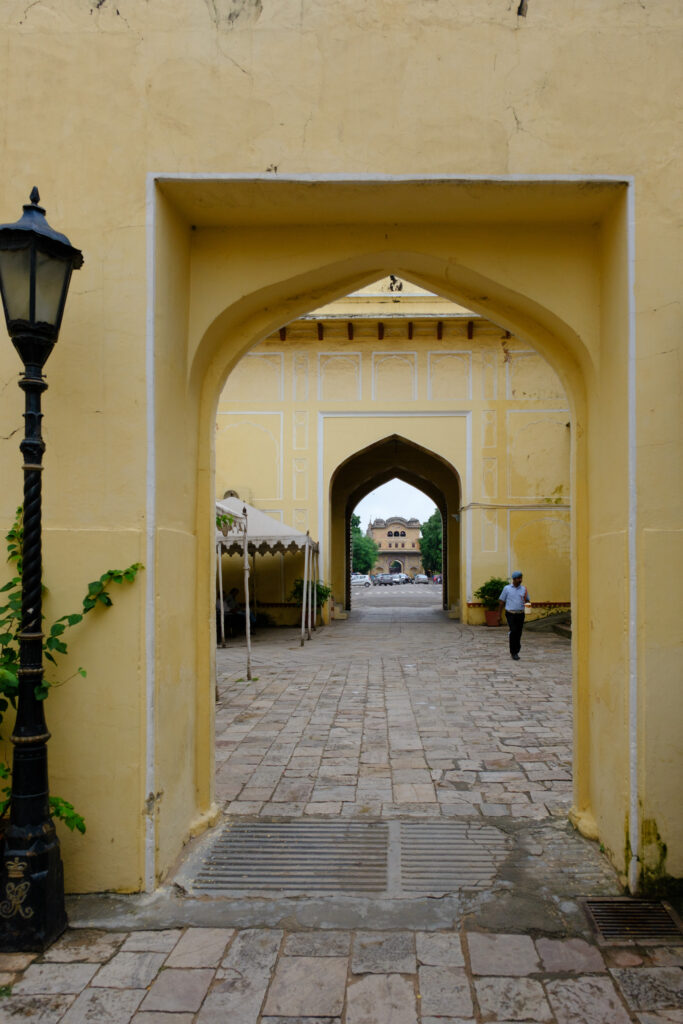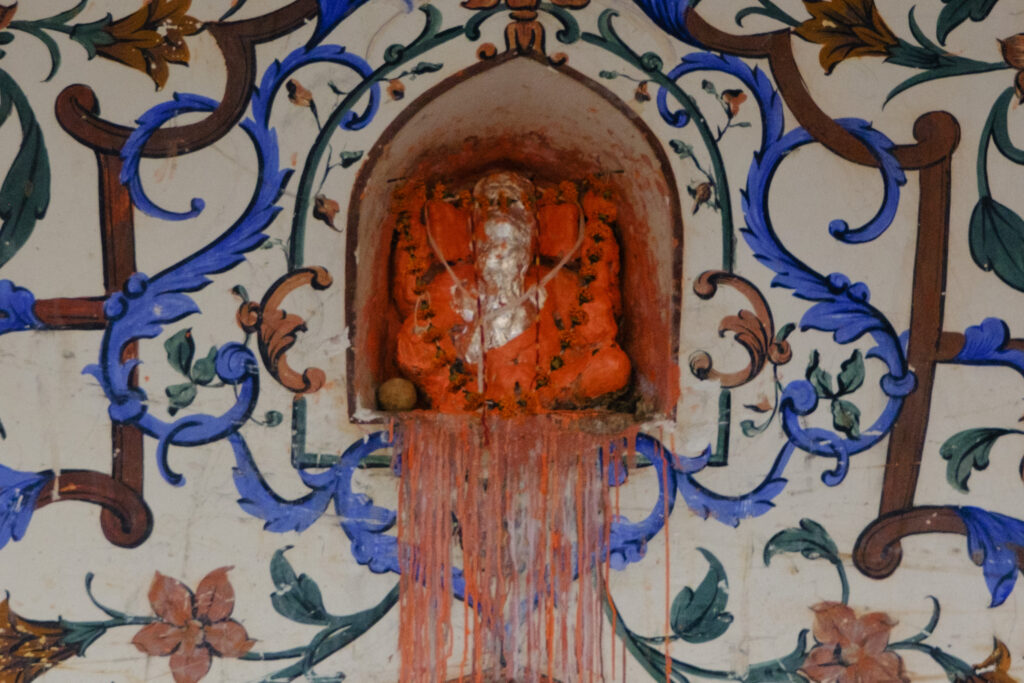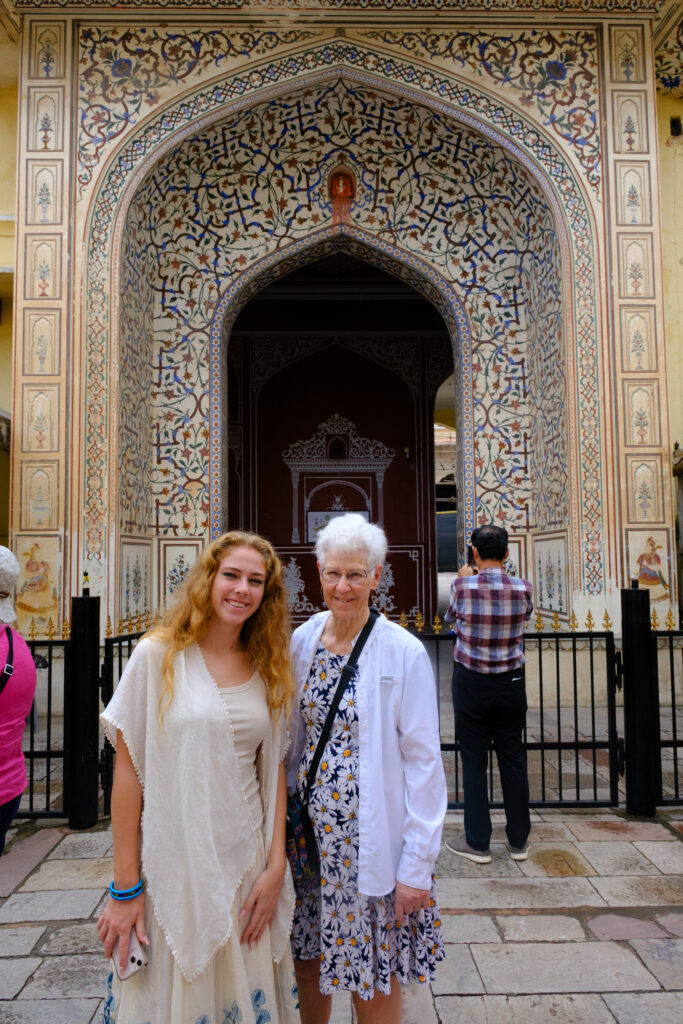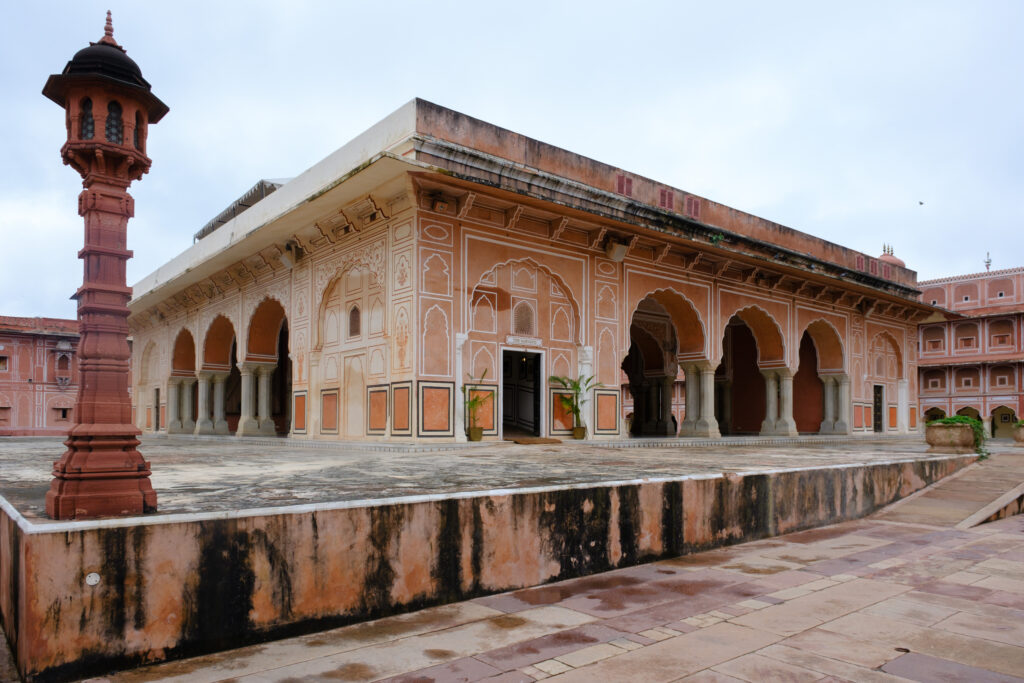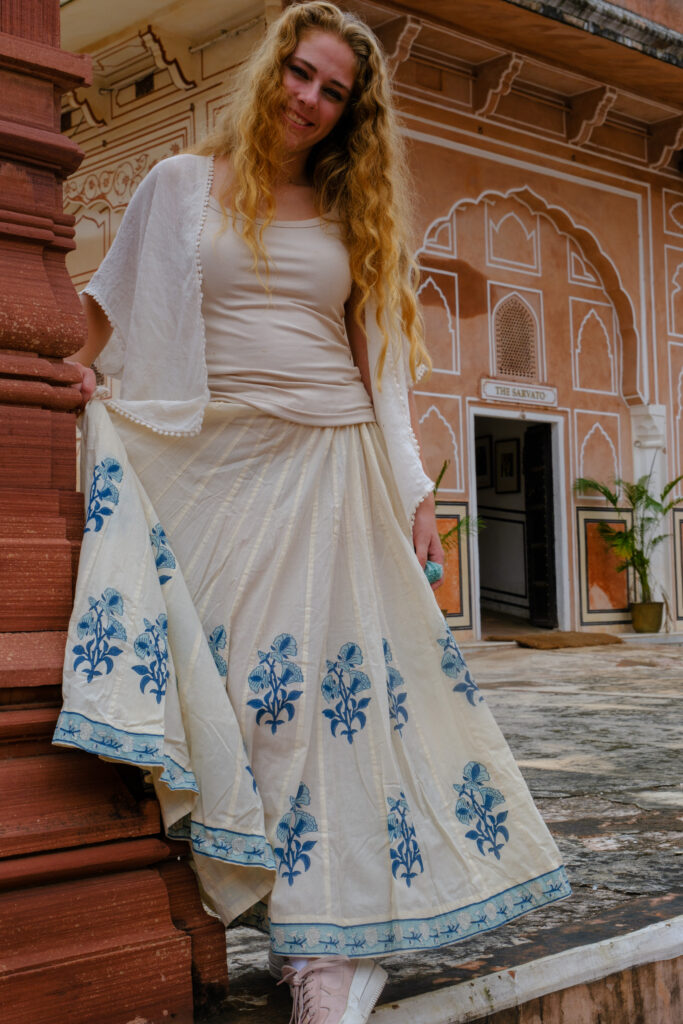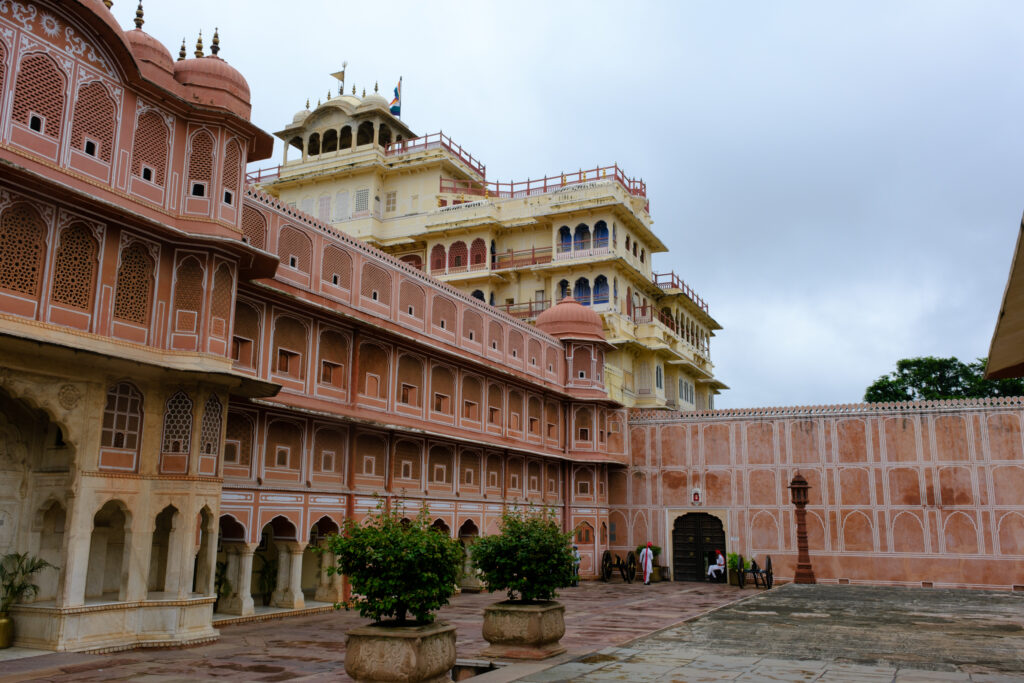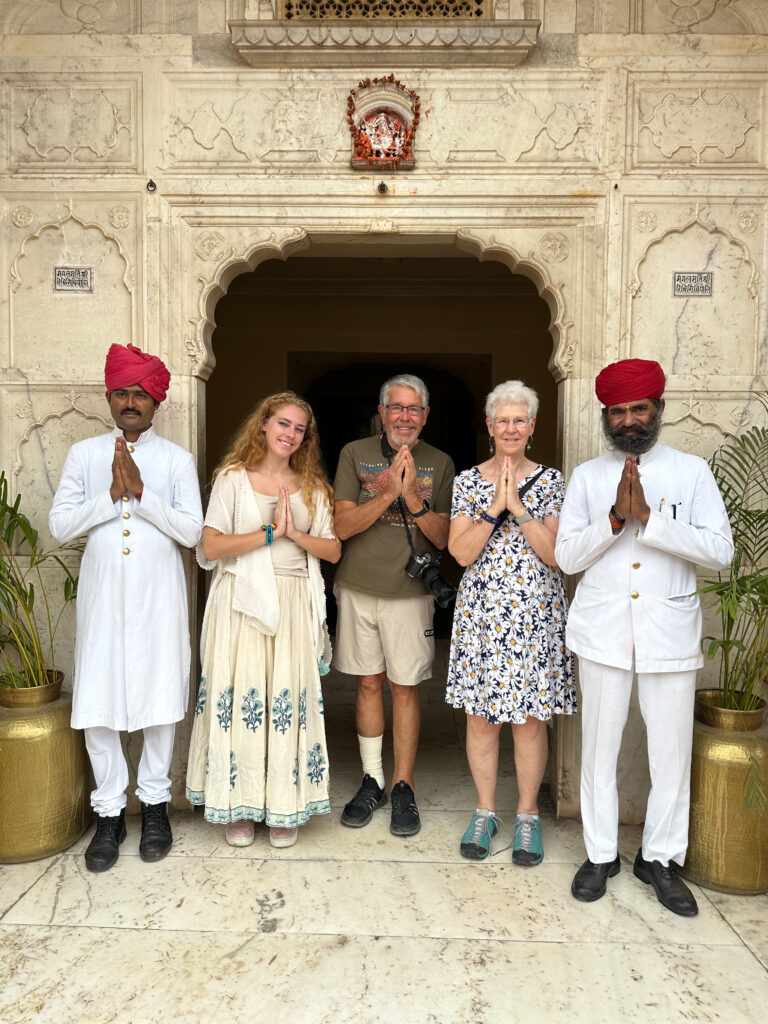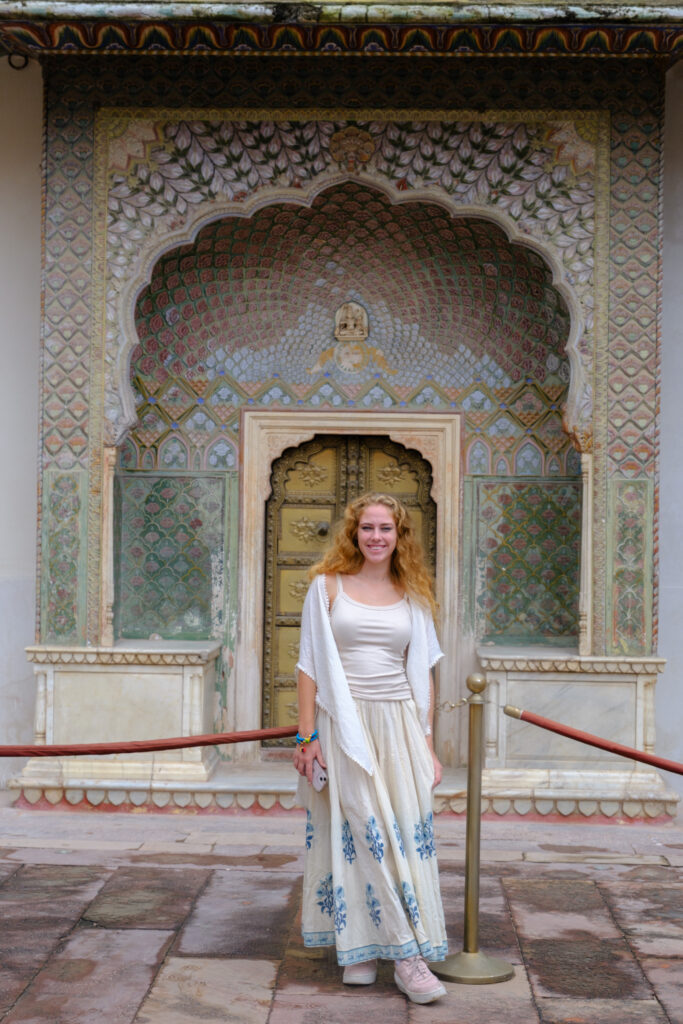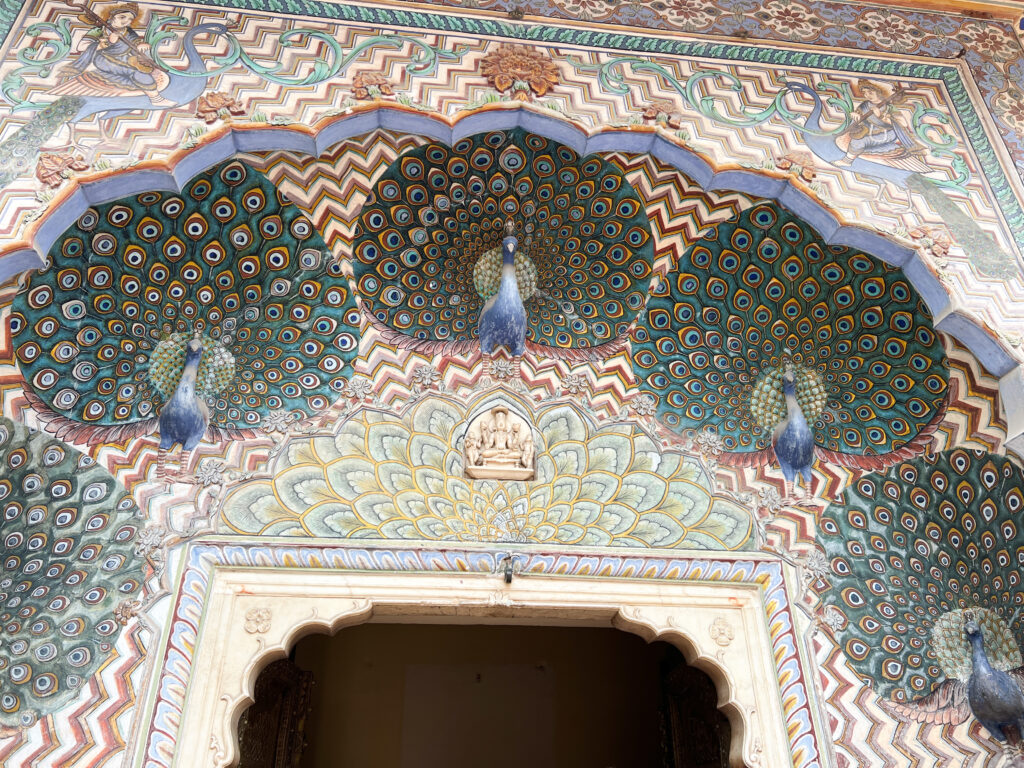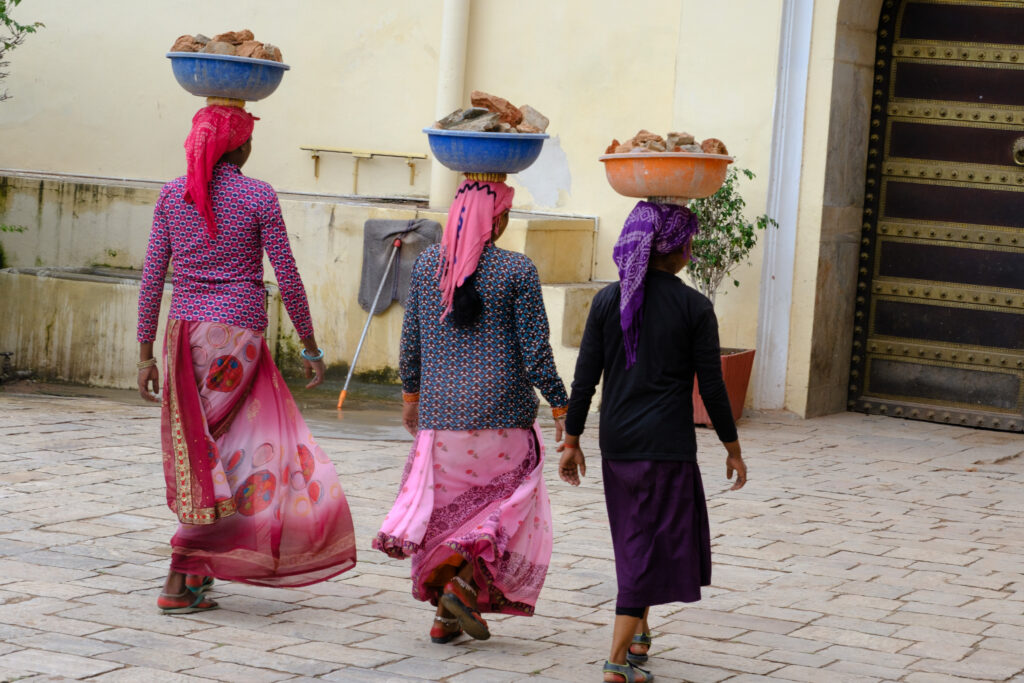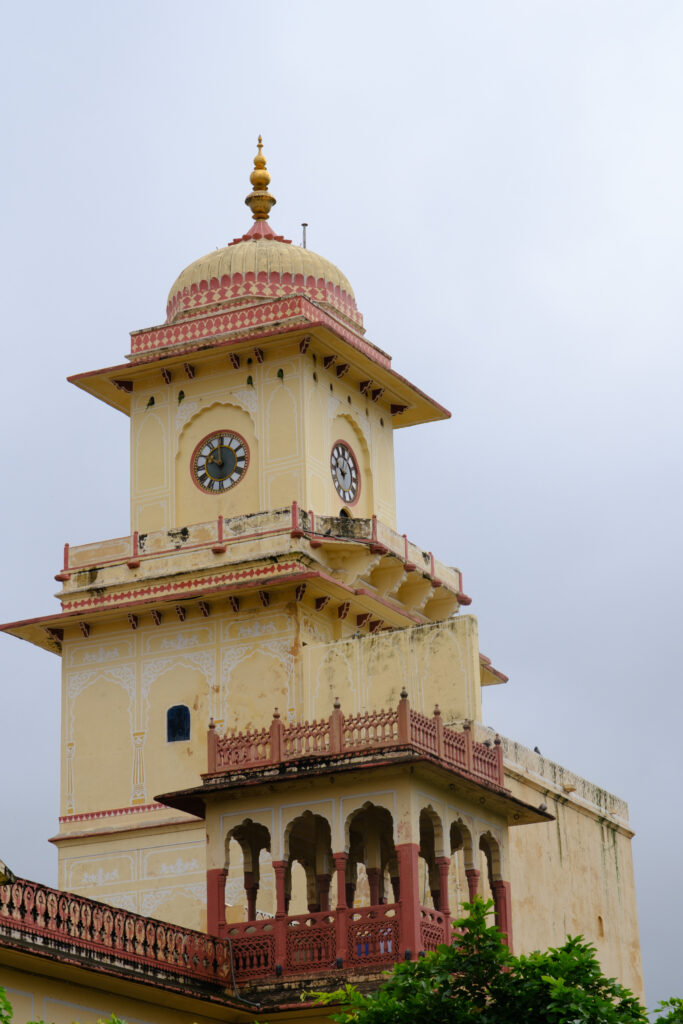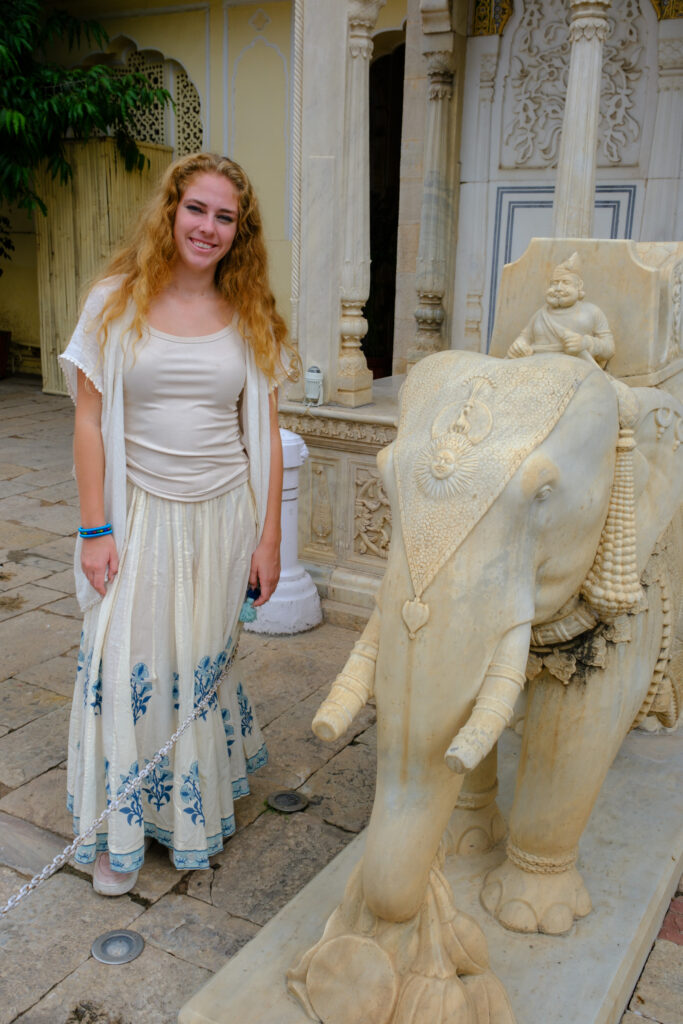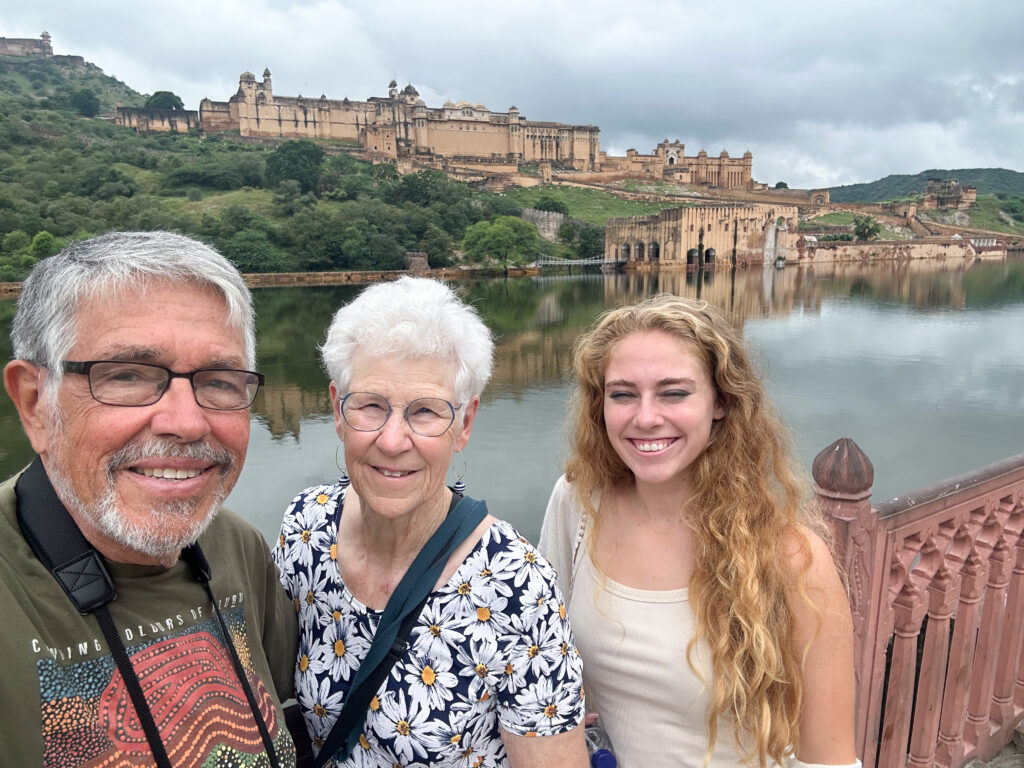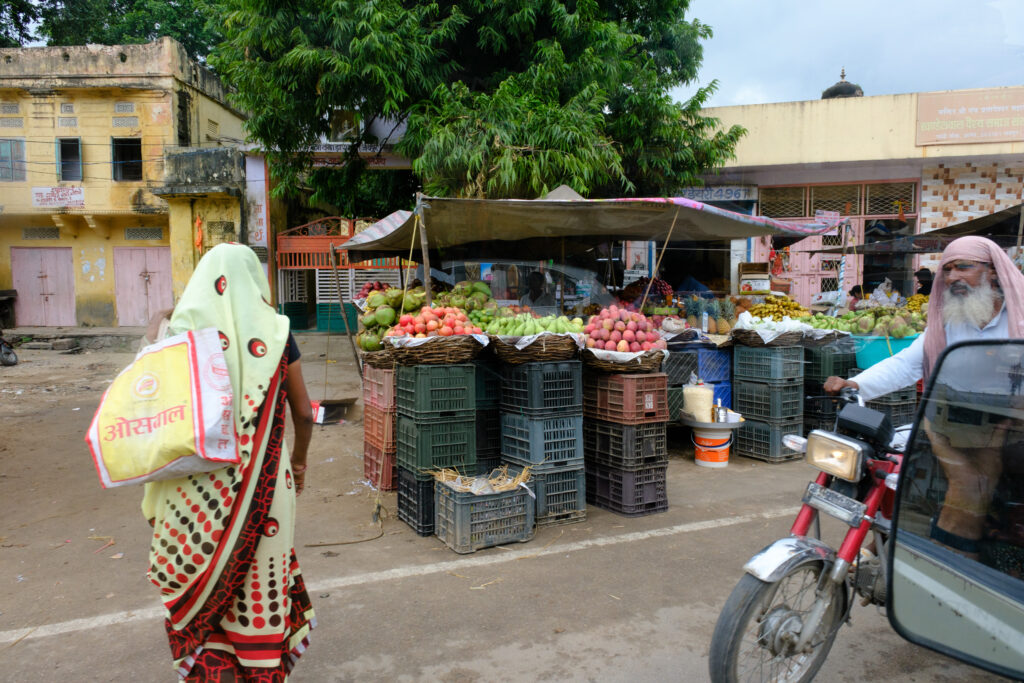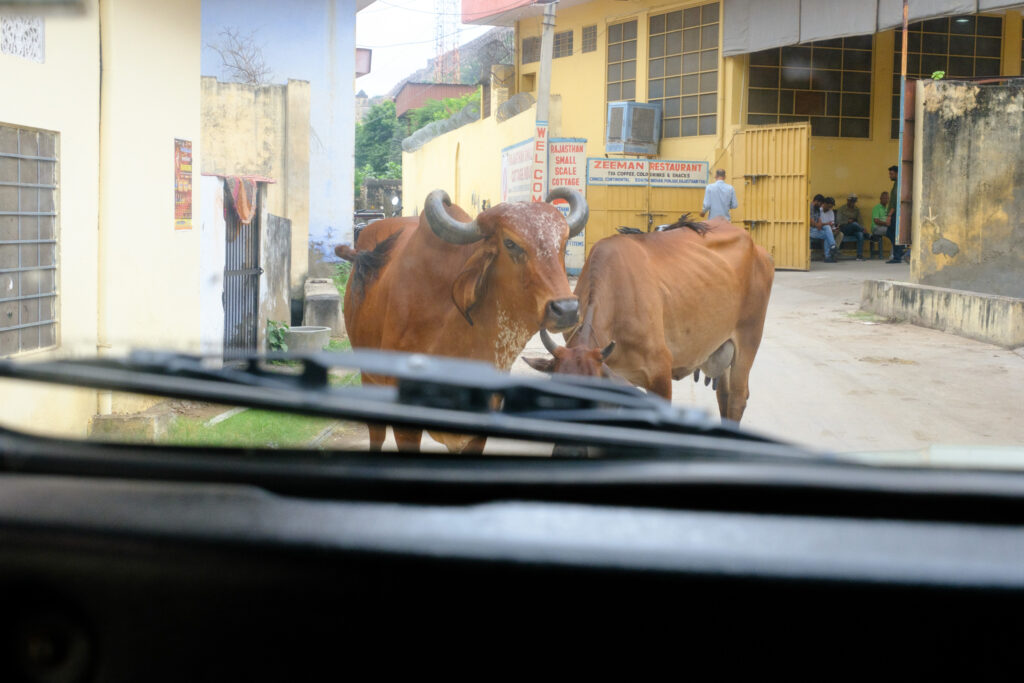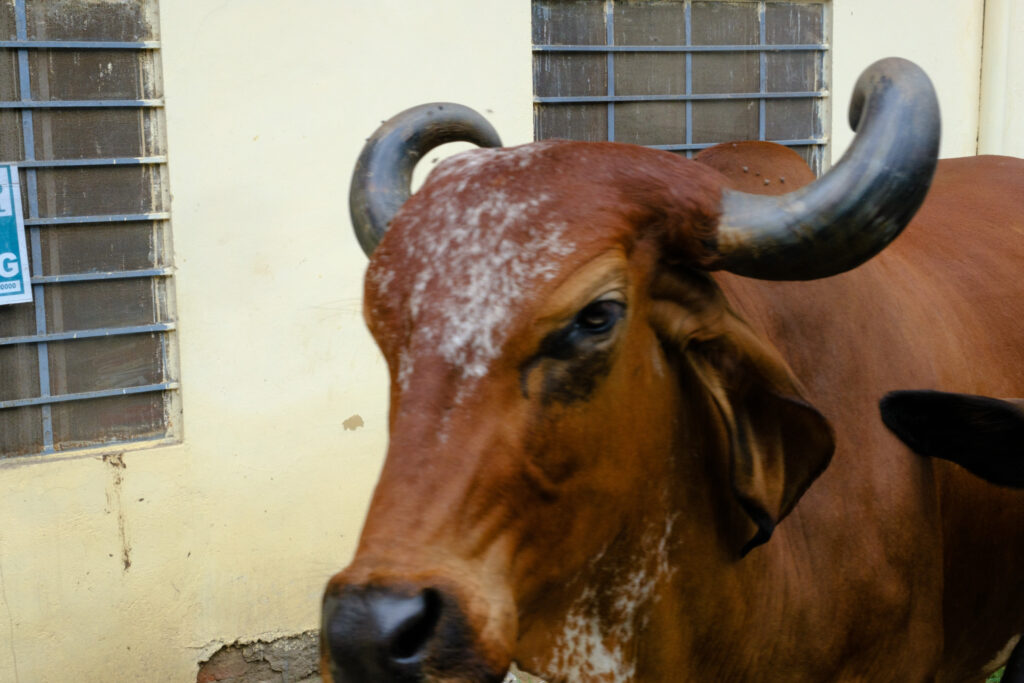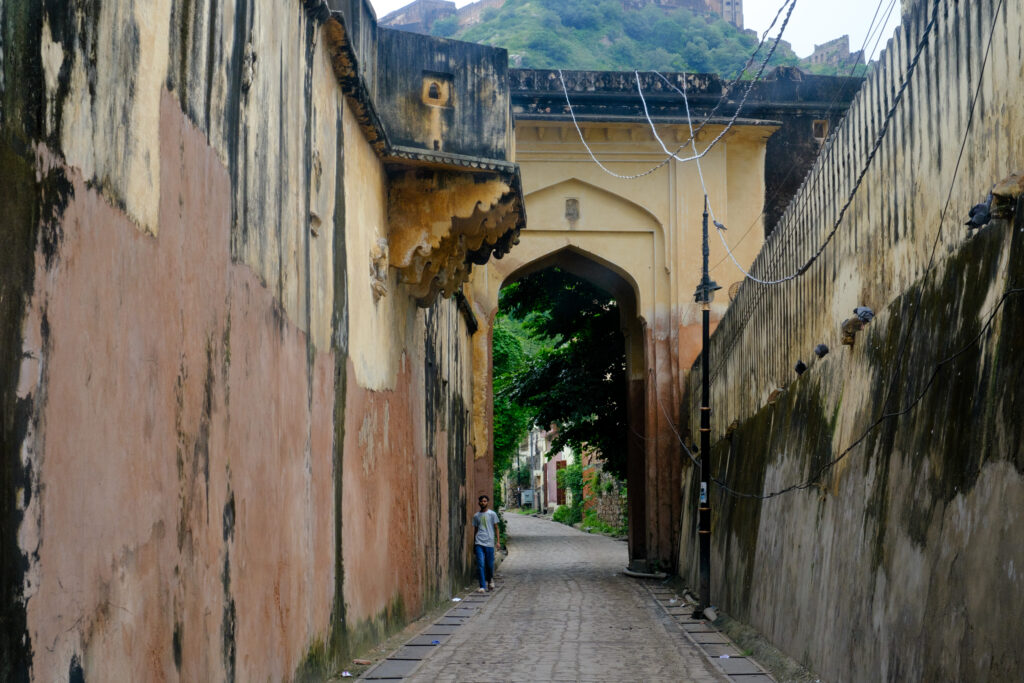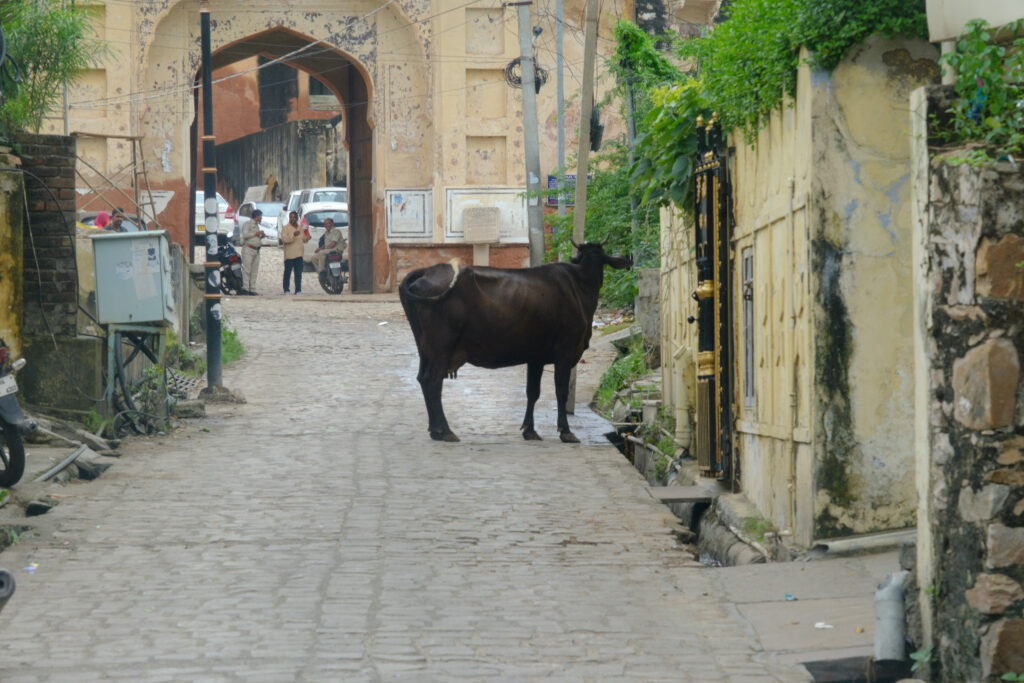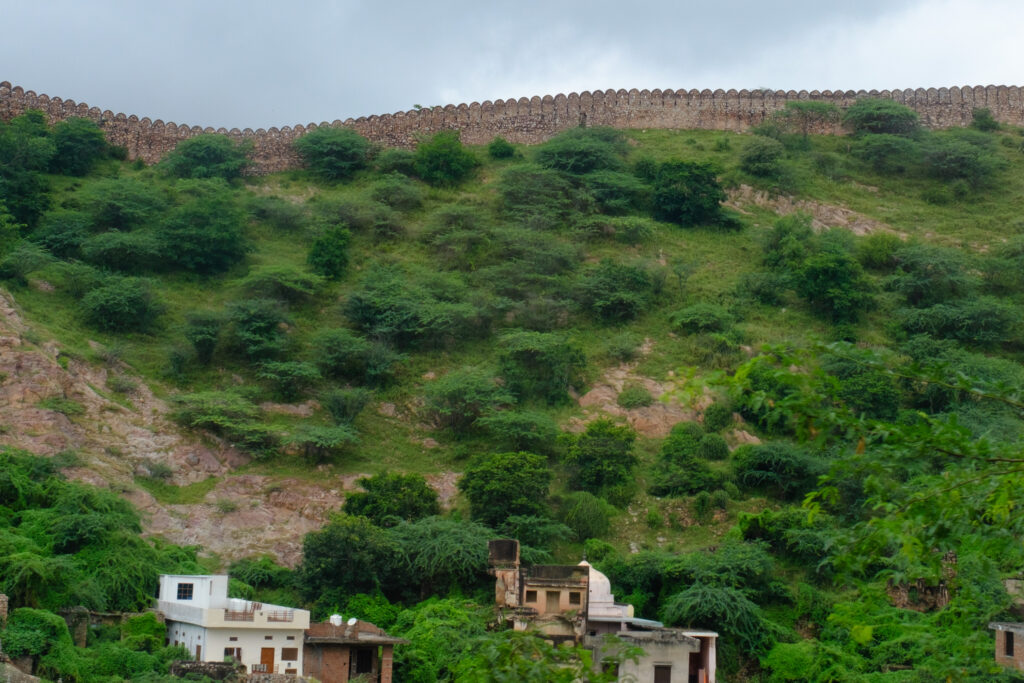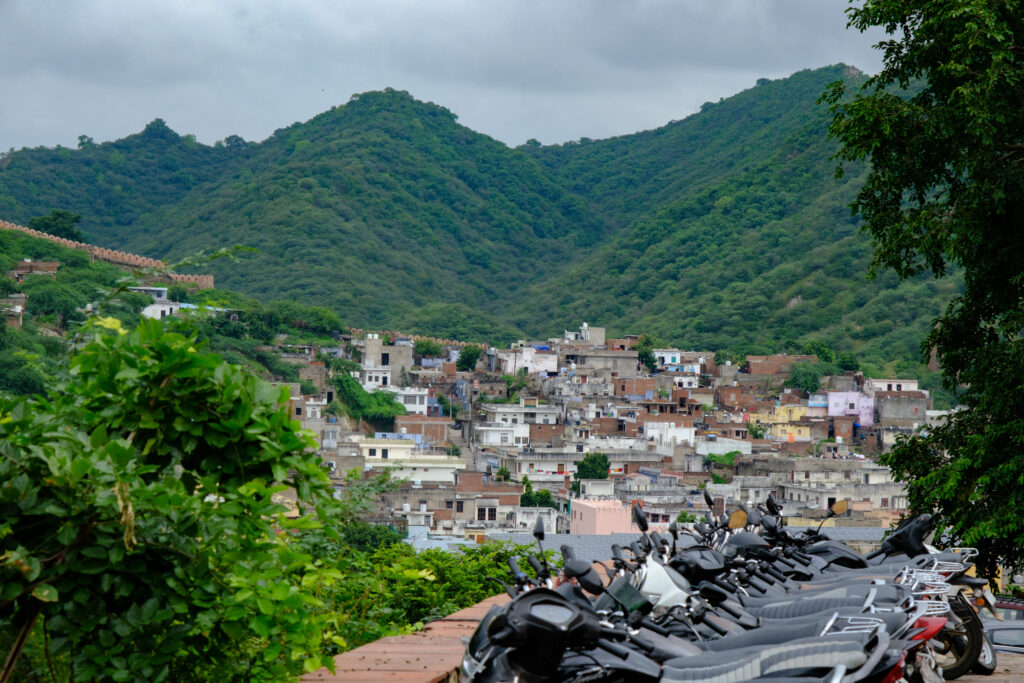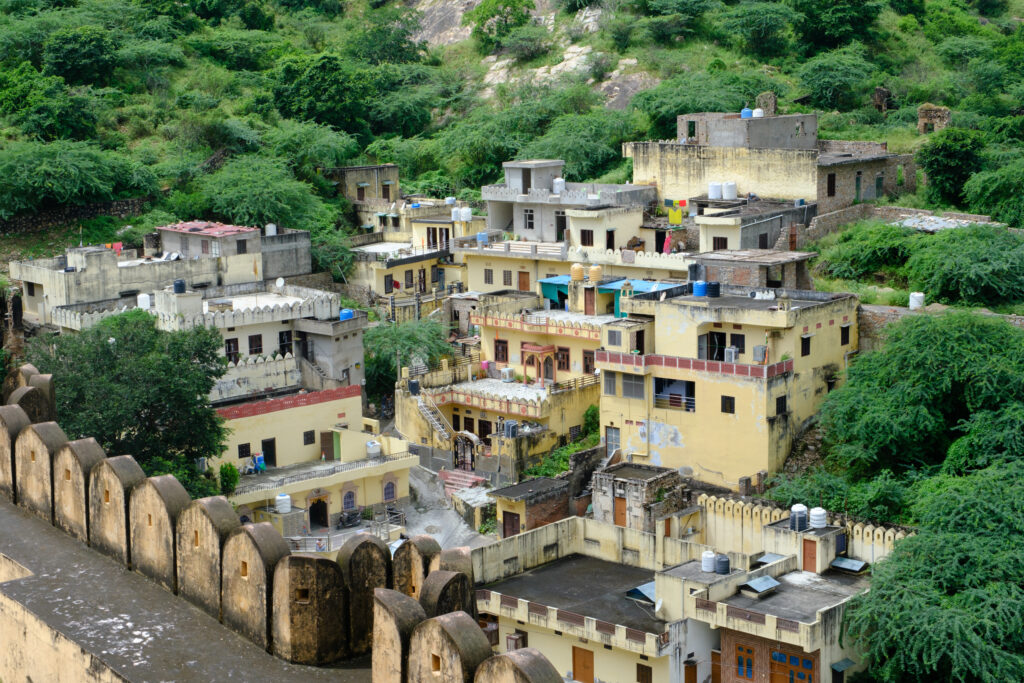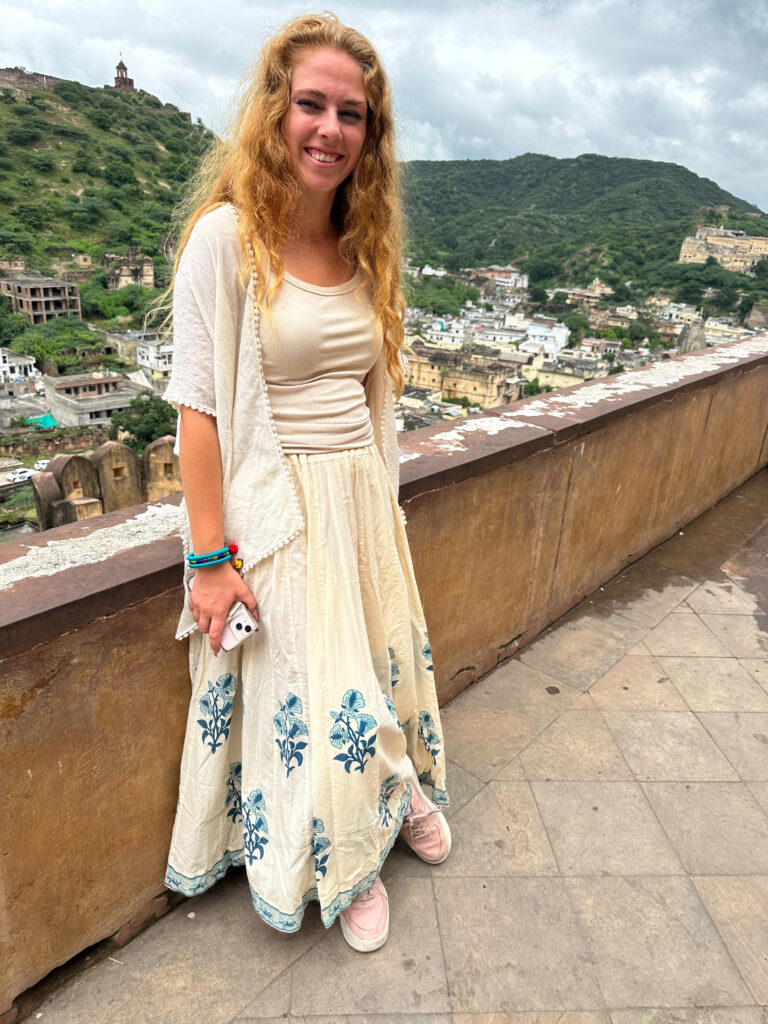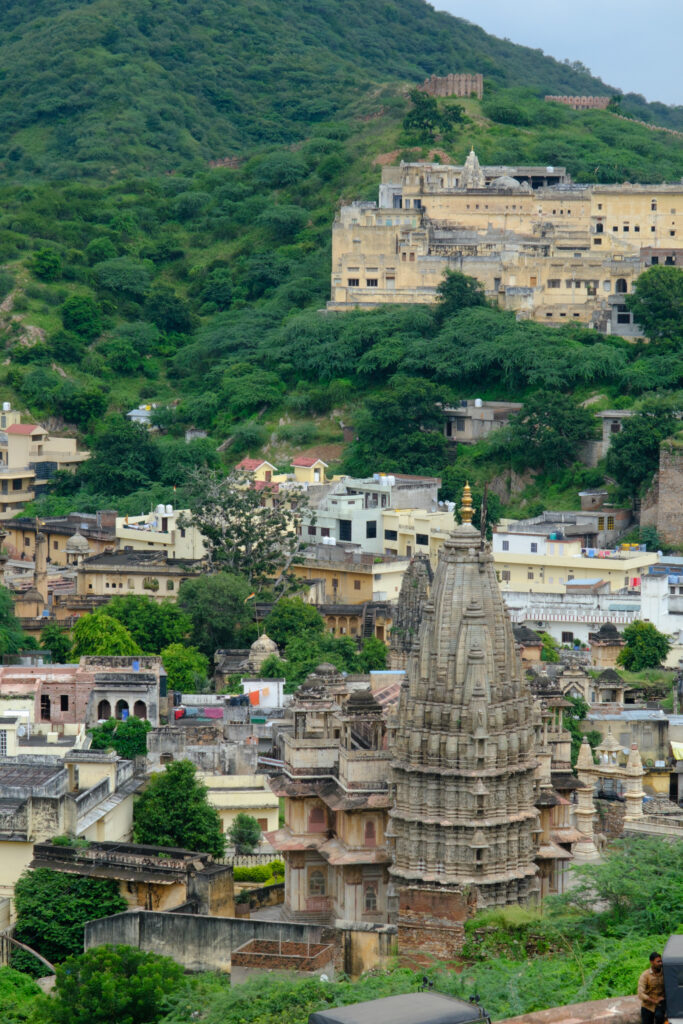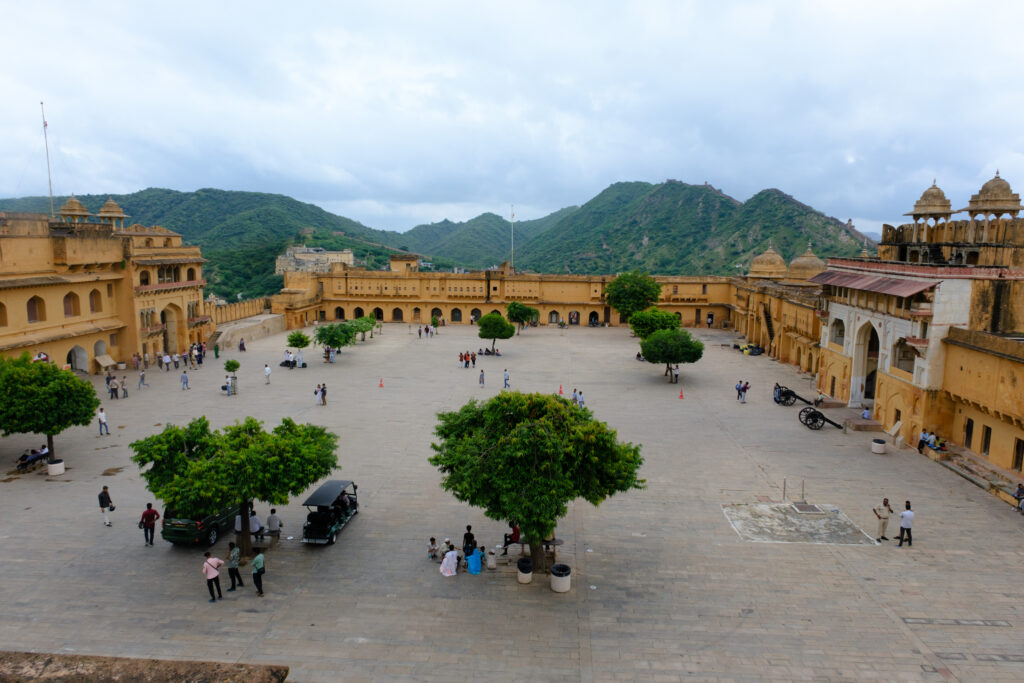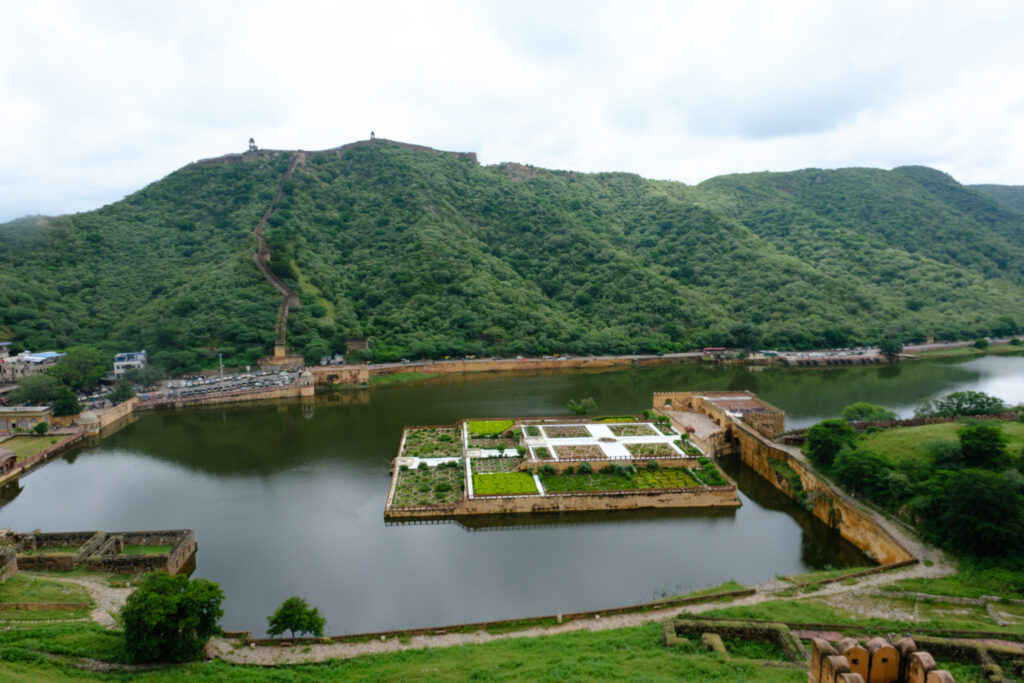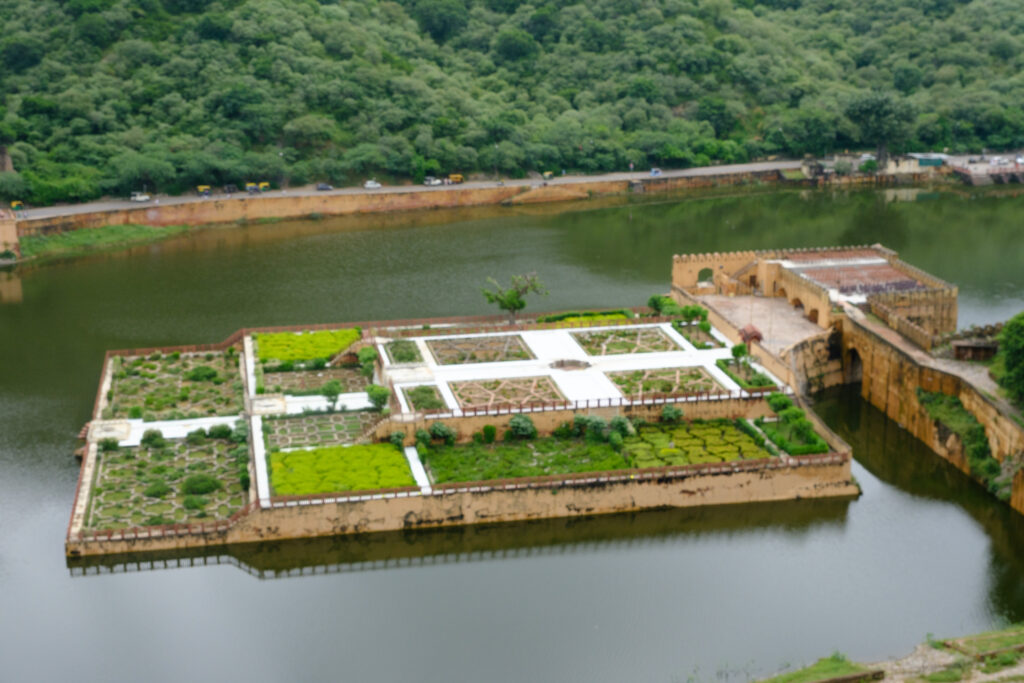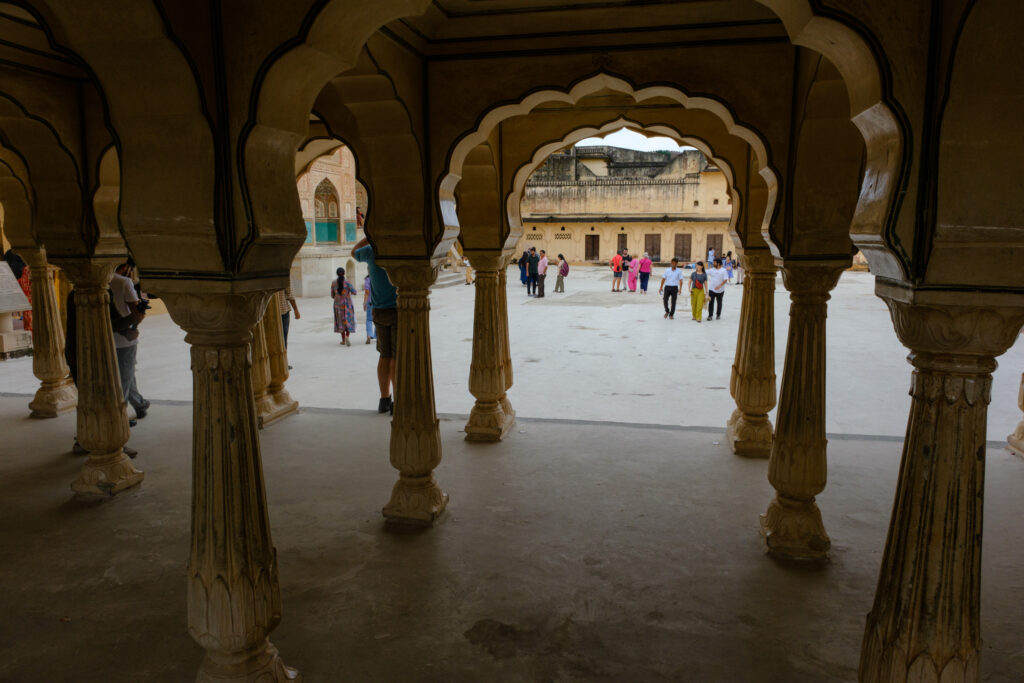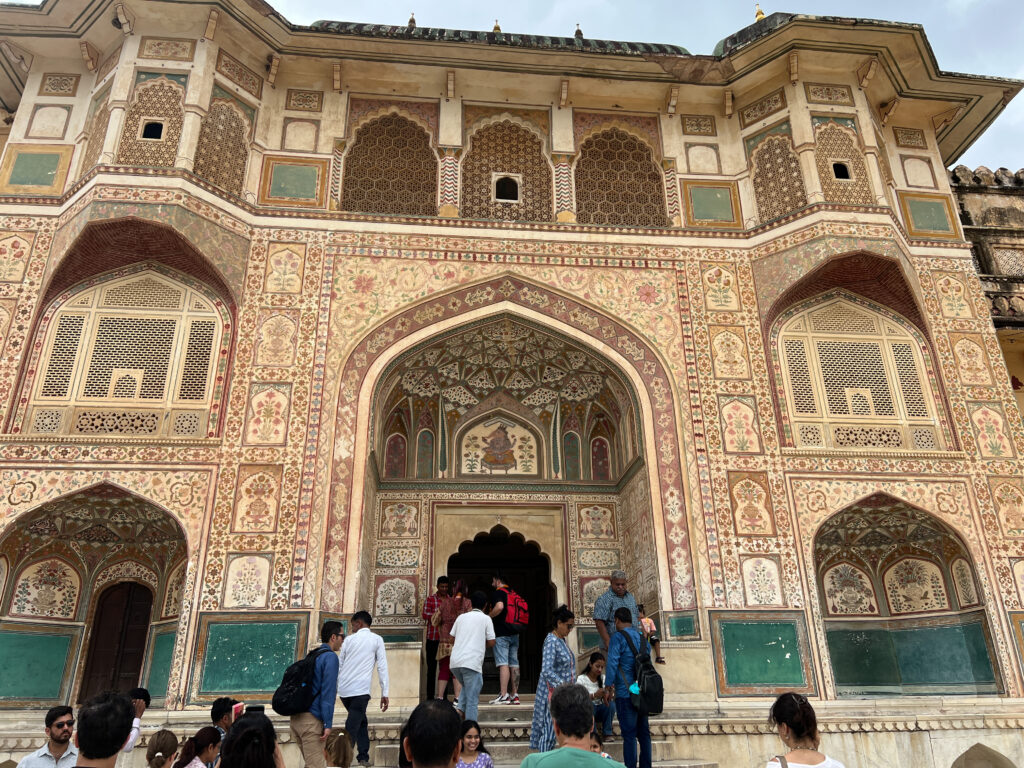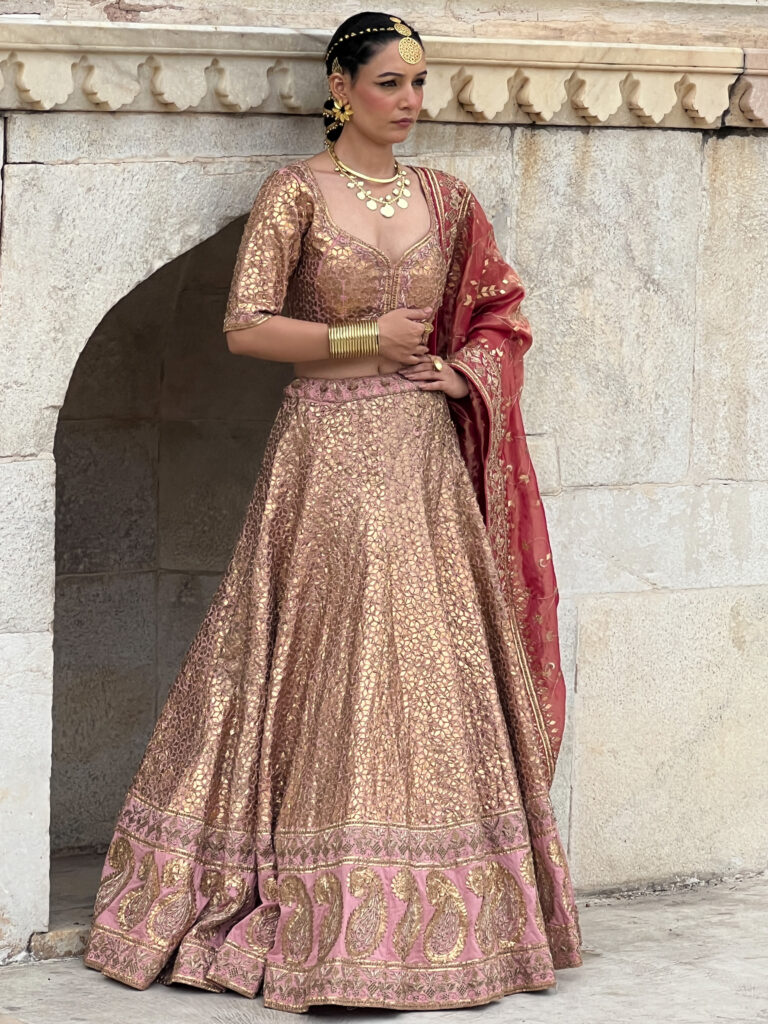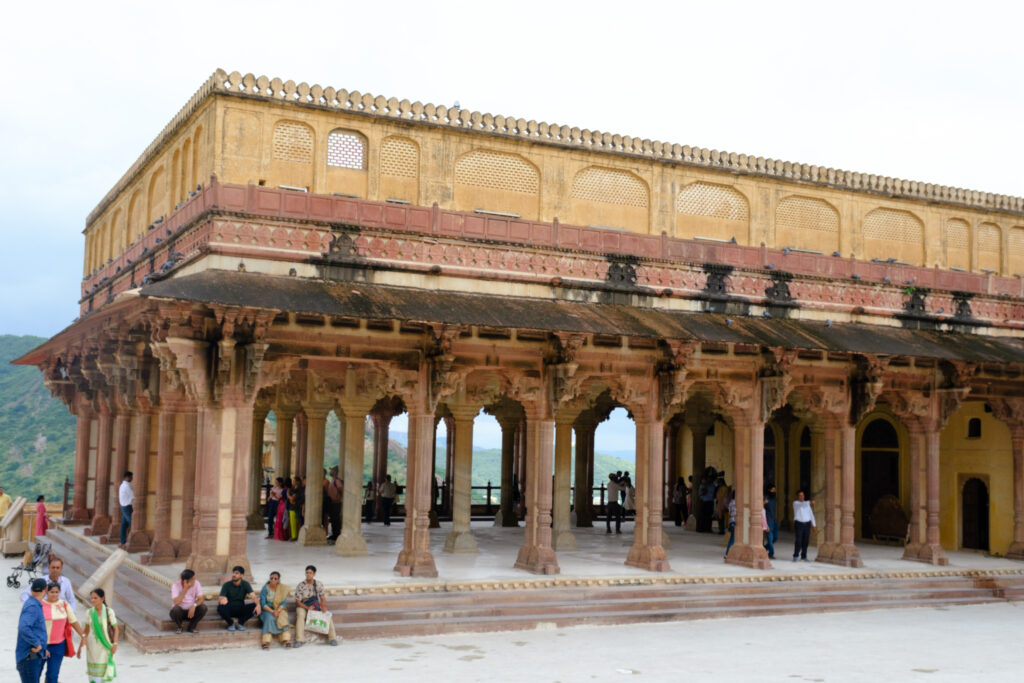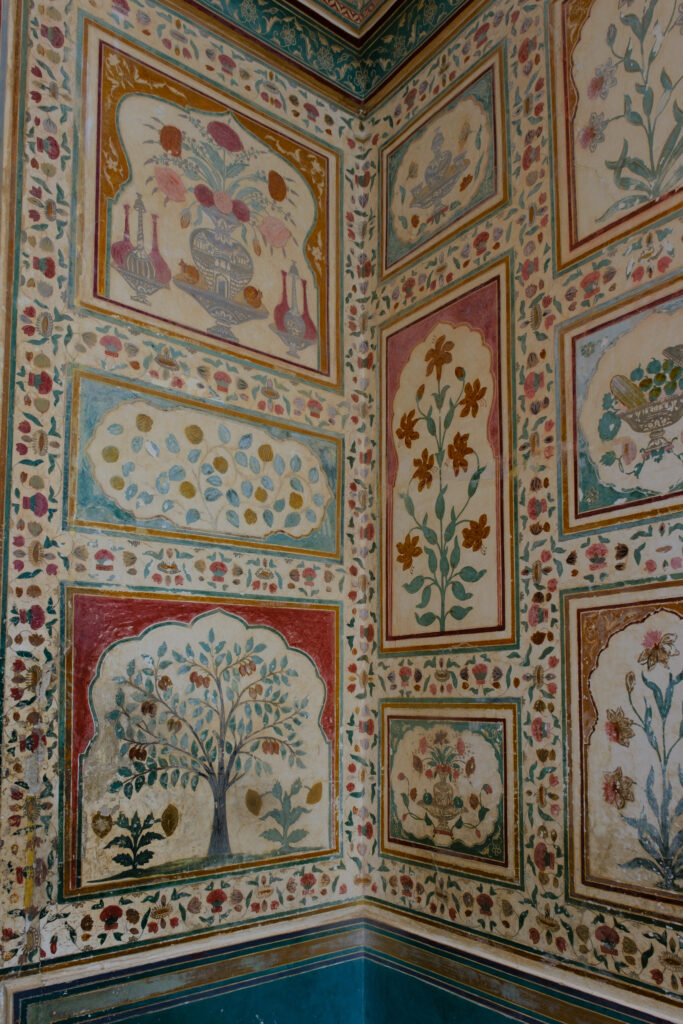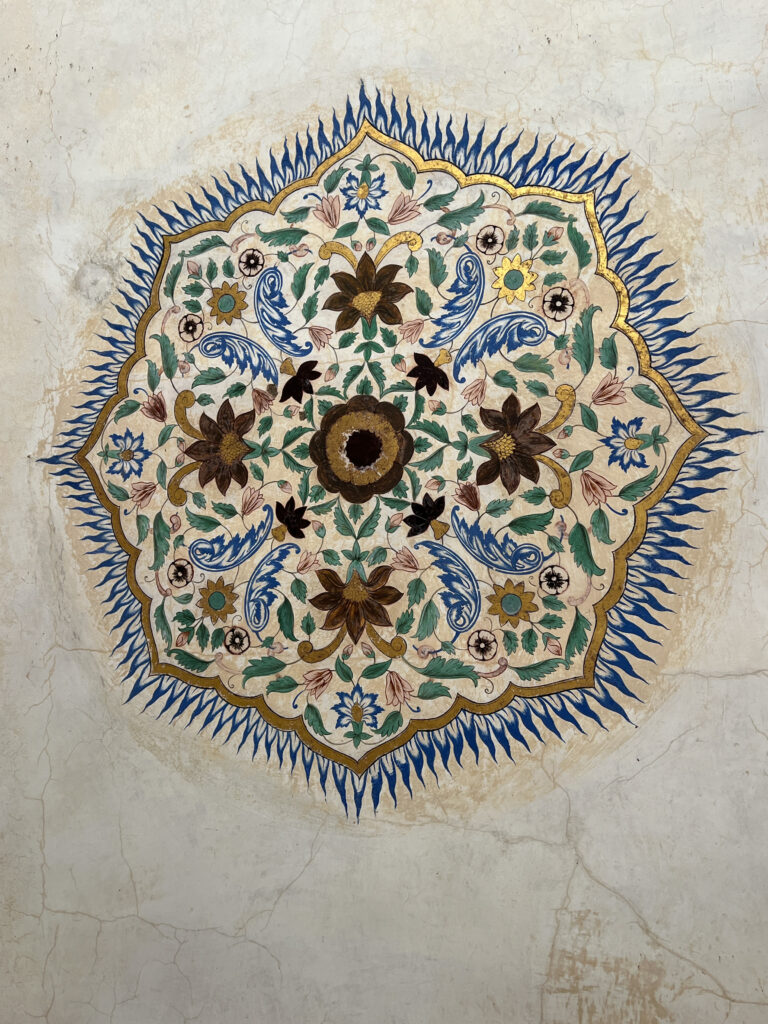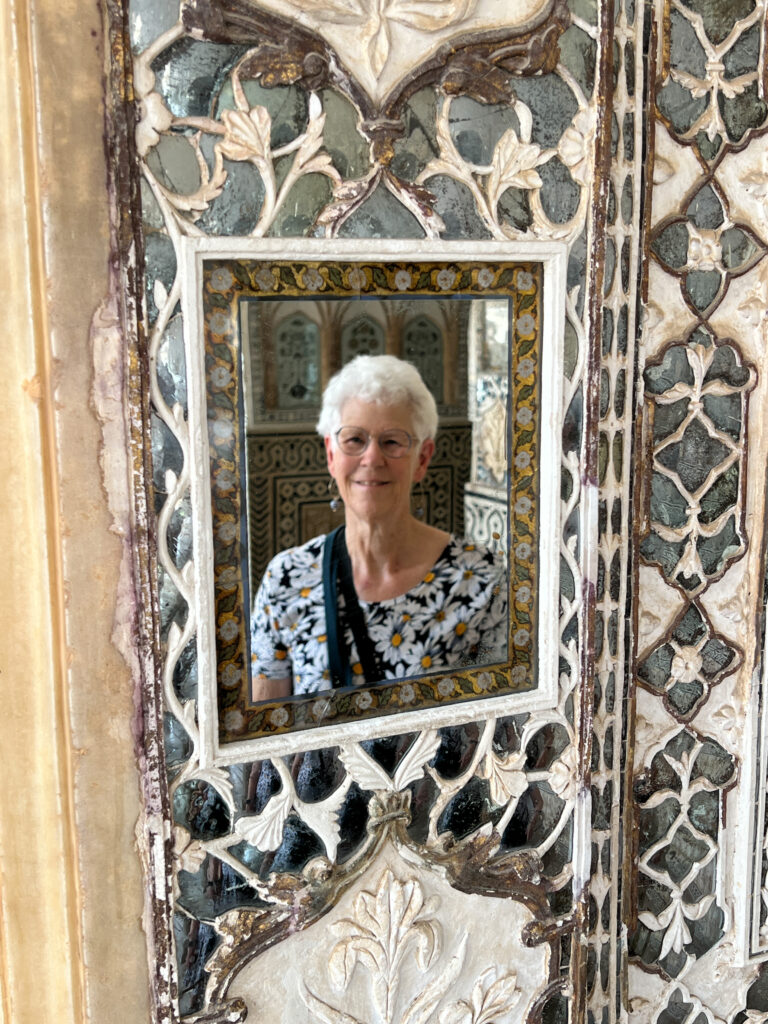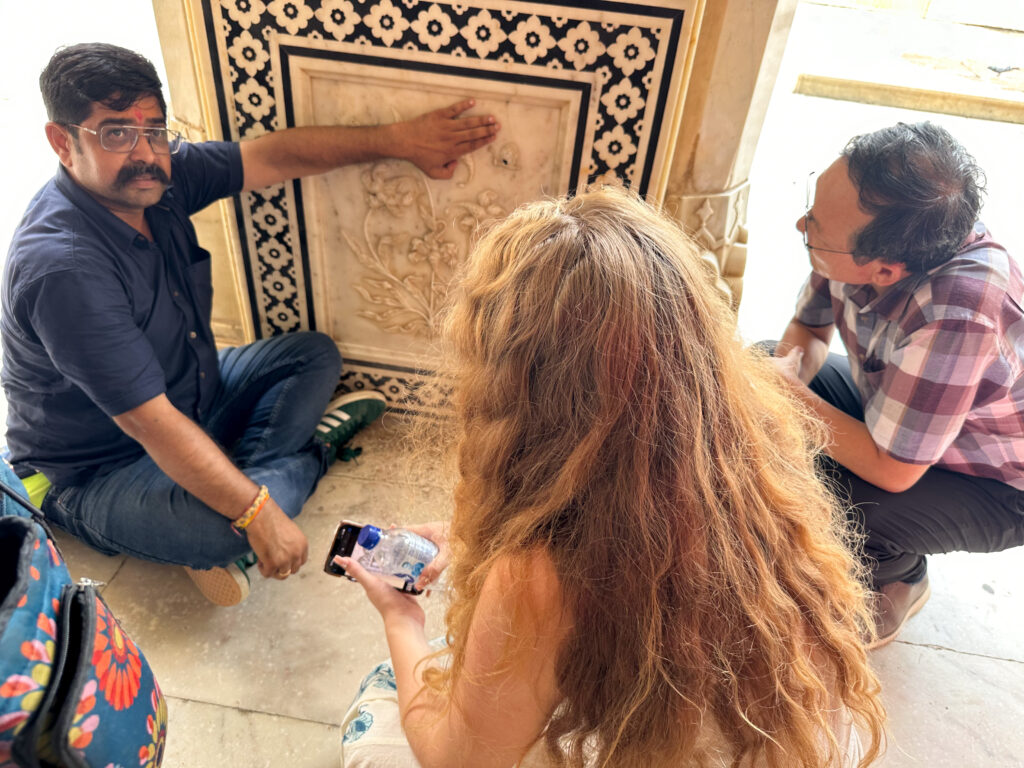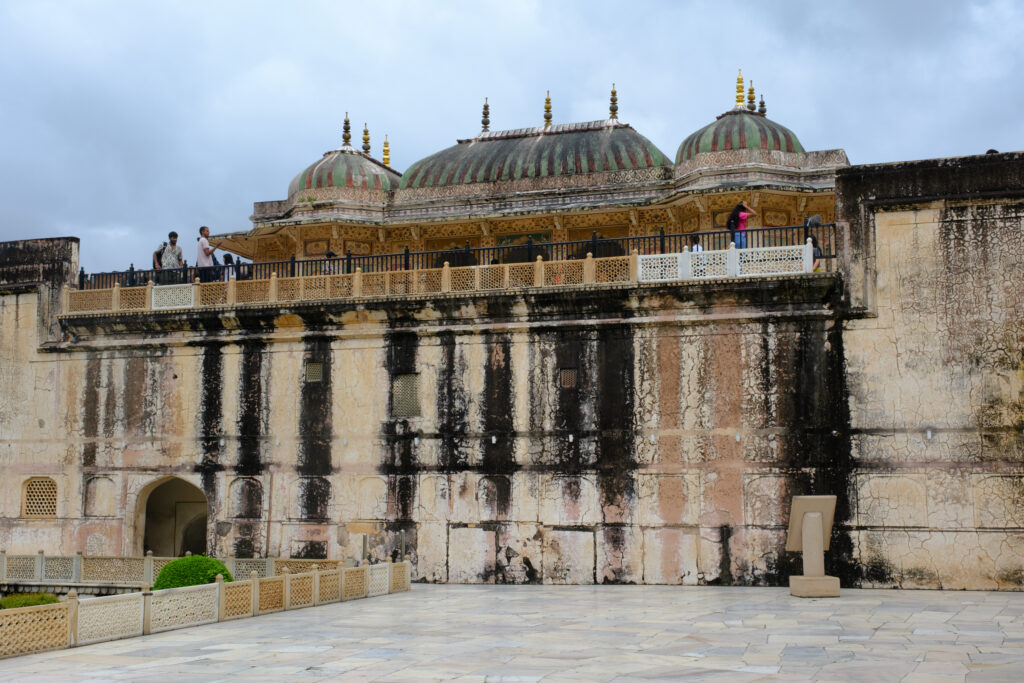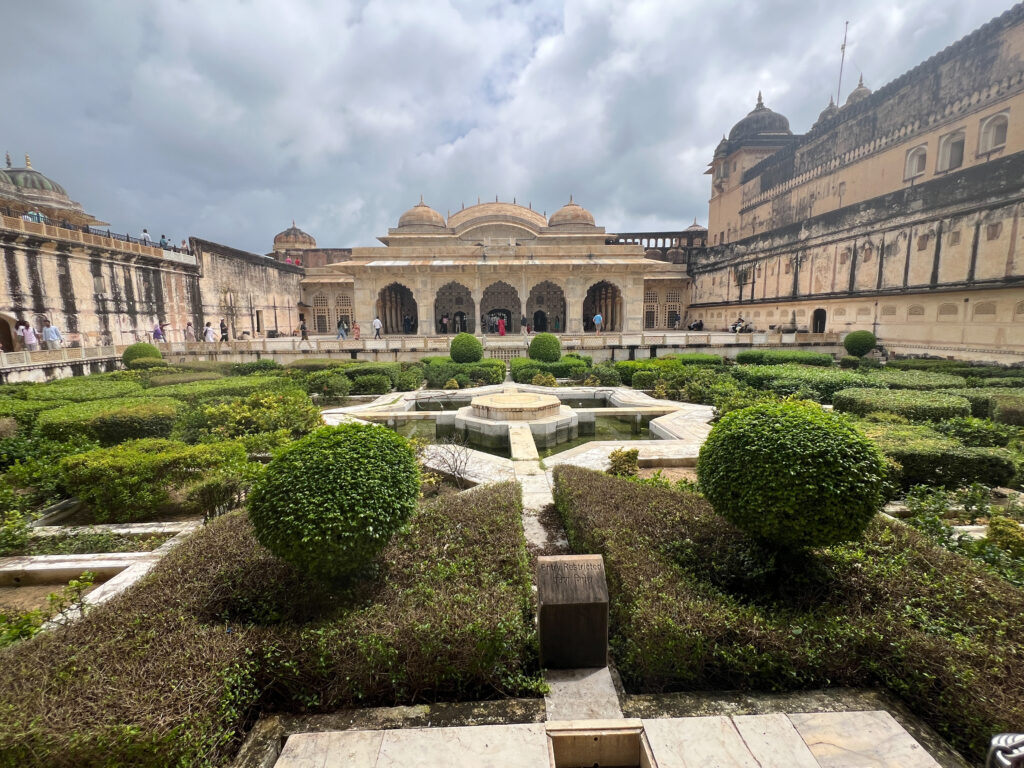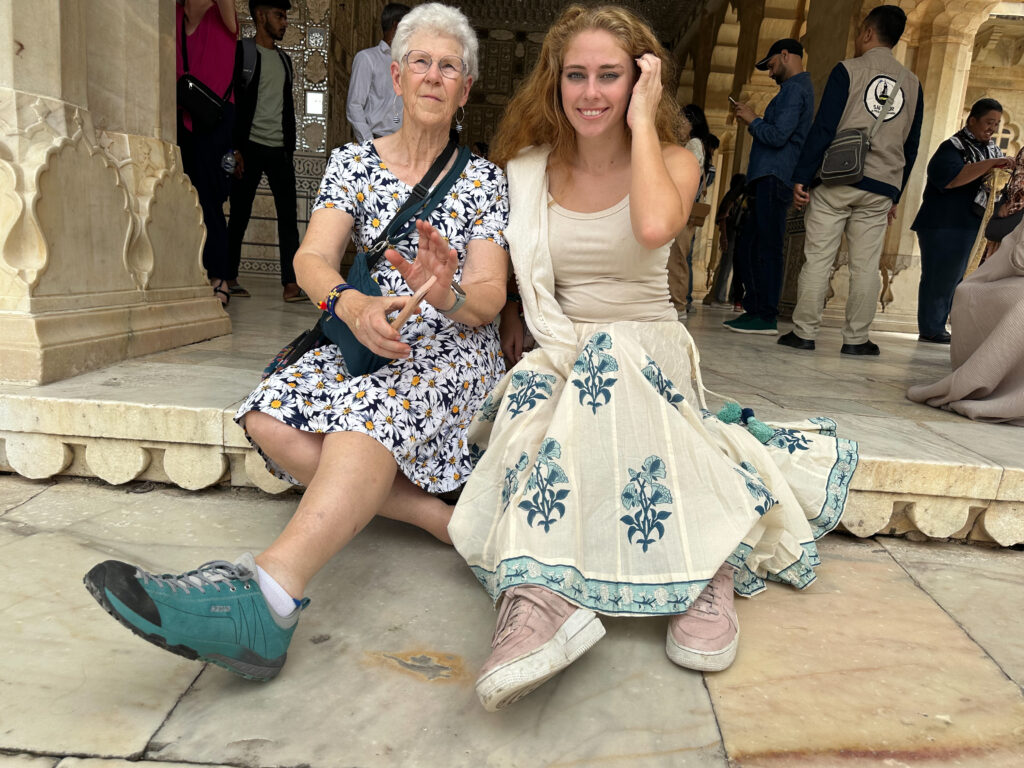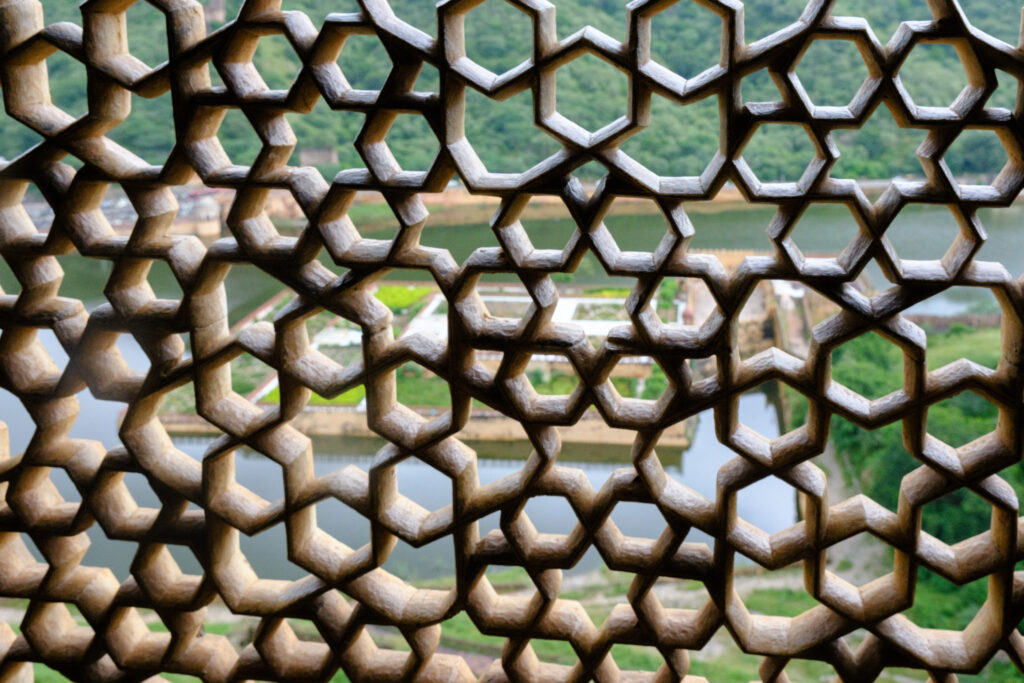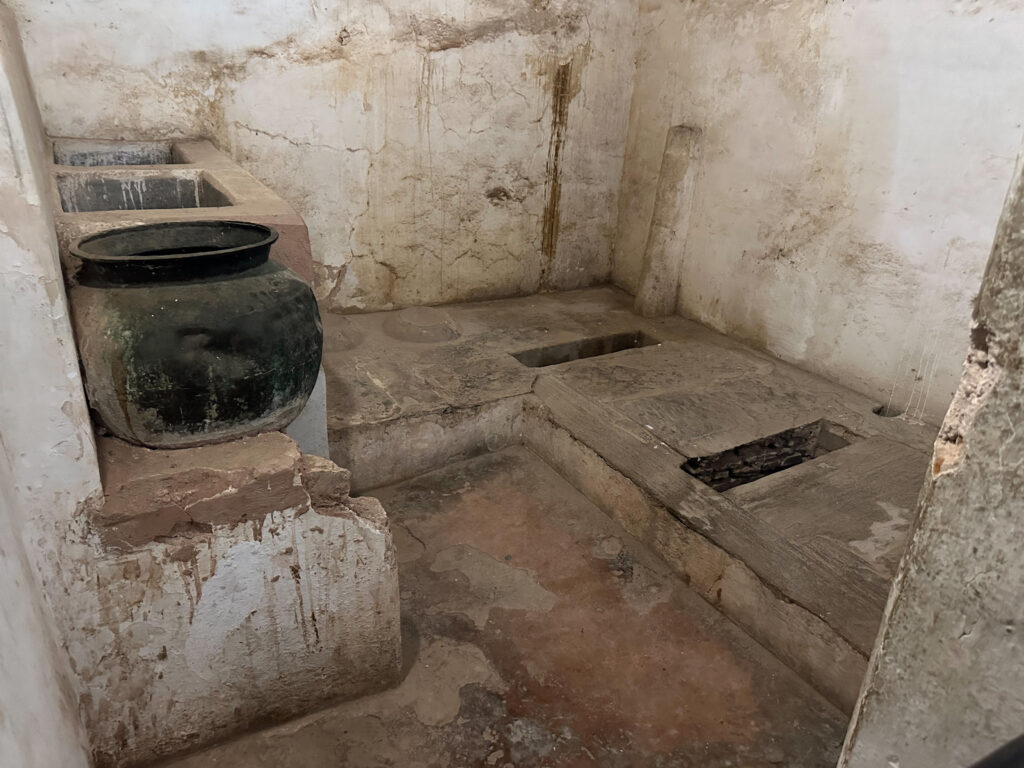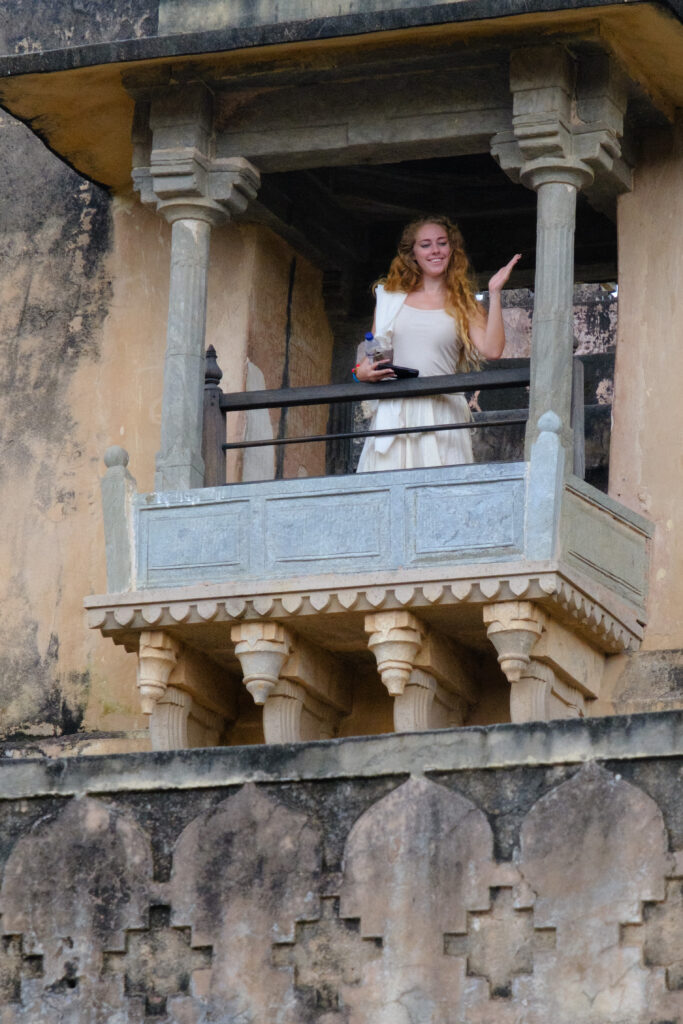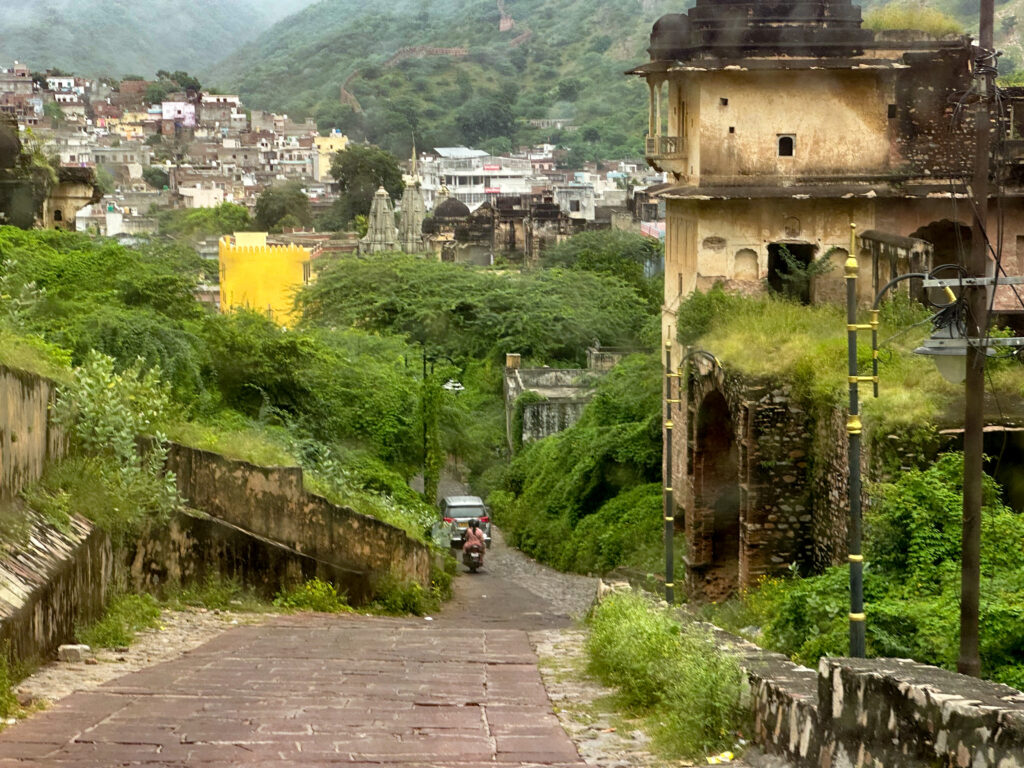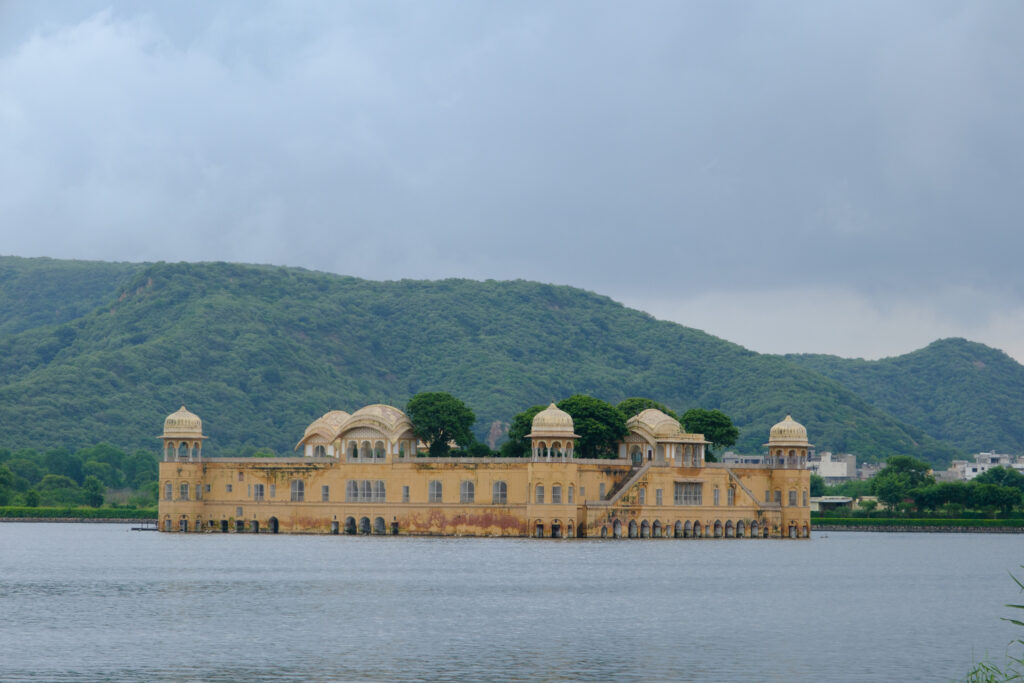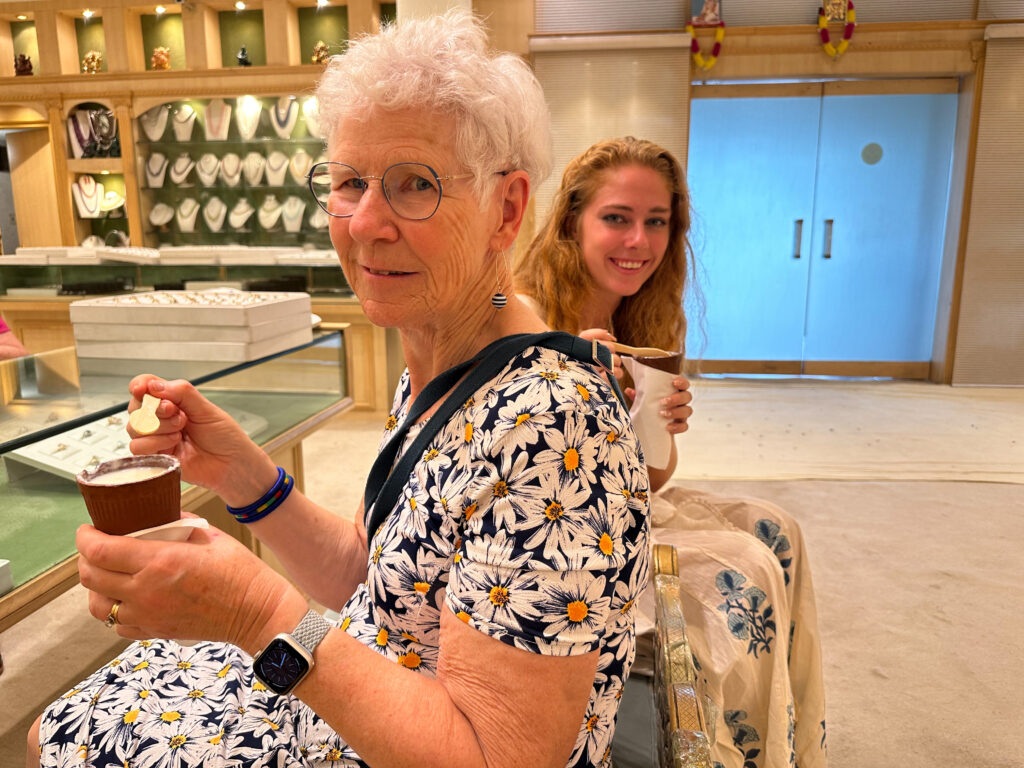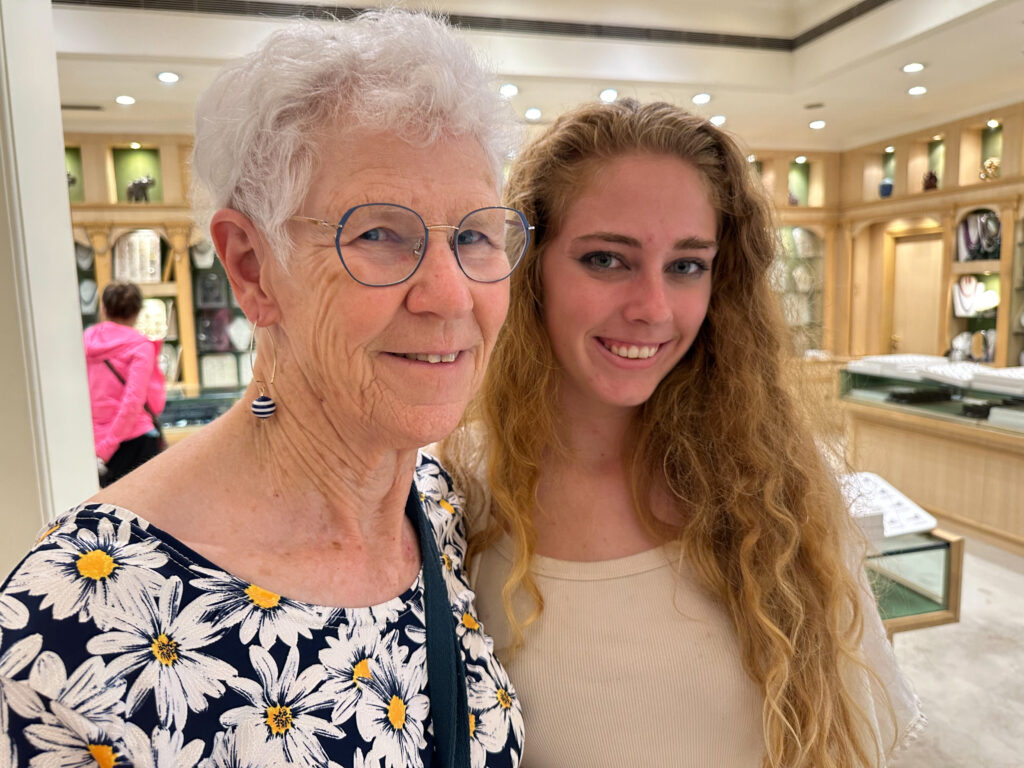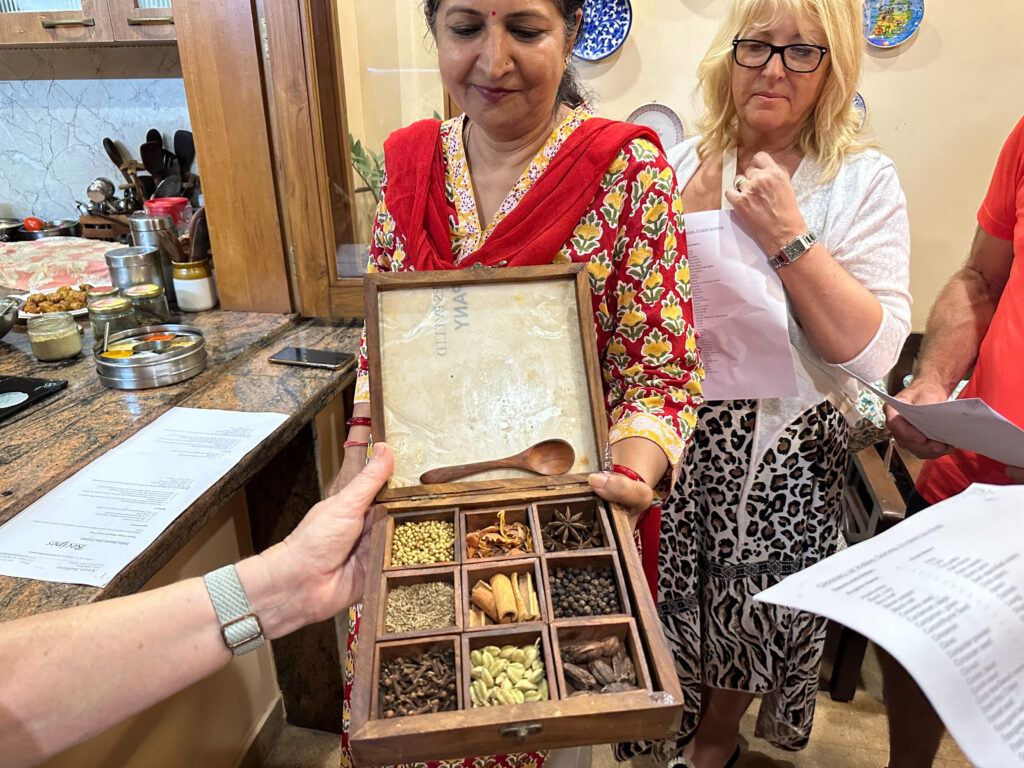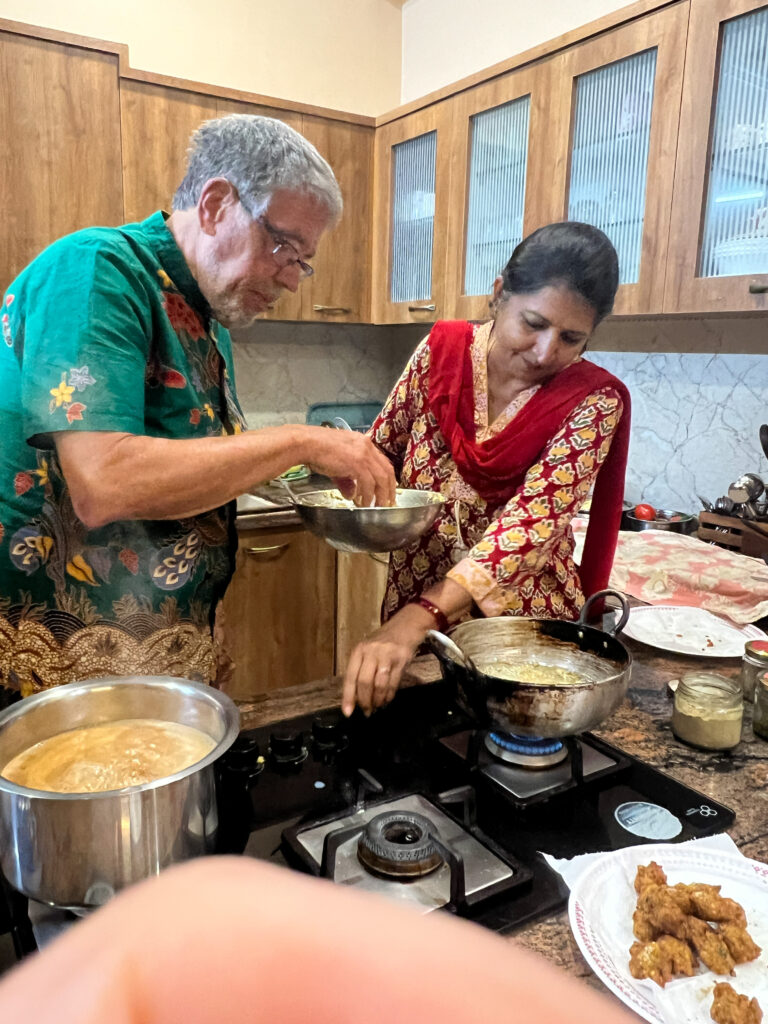The story of Jaipur is the story of its ruling family.- the maharajas, the Singhs. This region in present-day Rajssthan state. The two places we visited – the Jaipur Palace and the Amber Fort were the creations of the Singhs.
The region has been under Hindu control for a thousand years or more, dating back to before the Muslim invasion and continuing after. The Singh dynasty and those that preceded it were the nominal rulers but were pledged in service to the current Mughal emperor. That meant that the maharajas were duty bound to provide armies to fight in support of the Mughal wars. The Mughal hold on its territory was tenuous and depended on the loyalty – and the armies – of the many vassal states under its control.
Our visits were in reverse chronological order – the most recent first and the earlier last. That was to beat the crowds. I’ll talk about them in chronological order.
The Amber fort is located five miles or so from Jaipur. It was first built by Man Singh I in 1591. It served as the seat of power and home of the ruling maharaja until 1727, Each maharaja modified the fort to fit his needs, depending on the number of wives, administrative needs, etc.
The Ambe fort is located on a hill but is surrounded by a mountain range. A wall – the second-longest wall in the world, second to the Great Wall of China, surrounds the fort on the mountains. It’s built with four levels and a man-made lake down below provides hot and cold running water to the 99 toilets located around the fort. We clambered up and down with a seasoned guide, one who normally guides only dignitaries, such as President Macron of France. He’s doing this as a favor to our guide, his fried Jai.
Sawai Jai Singh II lived there for a while but eventually decided the Amber Fort was inadequate. The population of Amber, the town had grown to large for the limited land around the fort. The water supply was inadequate. And, being a man of science and particularly astronomy, decided that a more propitious site was needed. He therefore built the palace of our first stop, the Jaipur Palace.
Not only did Singh II build a palace, he built a city. Rather than a city with narrow, winding streets like Agra and other old cities, Singh II designed a city with broad avenues laid out in a grid. There is a wall surrounding the city, with entry gates that defines what is today the Old City. Jaipur today extends beyond the walls and is in fact the fourth largest city in India.
Throughout this period, the Singhs were on the ins and the outs with the Mughal Emperors and particularly with Mughal Emperor 6, Aurangzeb, the guy who murdered his brother, chopped off his head and delivered it to his dad, whom he had locked up at Agra, thereby taking over the throne. Remember?
Aurangzeb was Emperor 6 out of 7. He was fighting what proved to be a losing battle to maintain the power of the Mughal empire. It was really a collection of kingdoms that had either been conquered or negotiated into a vassal relationship with the Mughal Empire. Those relationships, including the relationship with the Singhs, was coming apart. Aurangzeb commanded the Singhs to raise armies and fight wars from Afghanistan to all sorts of places in India. The Singhs sometimes did fight, often dragged their feet in reporting for duty and sometimes simply didn’t obey. The Singhs were demoted and promoted at the whim of Aurangzeb.
The architecture and decoration of the fort and palace is a blend of Hindu and Mughal influences. Limestone and marble are used extensively. Jai Singh II painted the palace a distinctive reddish color, giving the town the nickname of the Pink City.
Interestingly, the Singh family remains as the imperial family of Jaipur. At the time of independence (1947) the family’s income from taxes went away but the family was quite wealthy and today has the wherewithal to live the life of a king – polo and all the rest.
The current maharaja is quite young. The previous maharaja is the current person’s grandfather. The previous guy had only one daughter and the maharaja-ship goes only to males. The daughter had a son. The grandfather adopted his grandson and, viola, he had a son to be the heir to the throne. The maharaja’s mother is the force behind the throne, is an elected member of parliament and is a successful entrepreneur and business person.
Our “city walk” was called off due to rain showers; maybe tomorrow. Hence, nap time was extended until 6 PM at which time we left for our cooking lesson.
And what an experience that was. Our hostess was Kieran Rathore (instagram @karenskitchen.jaipur). She, with two sous chef assistants, led us in preparing seven different dishes in her home kitchen:
– Indian Masala Chai
– Lentil Pakoras (deep fried lentil dough)
– Seafood Aaloo (potato in white gravy)
– Shahi Paneer (solid cottage cheese in a tomato sauce)
– Vegetable Pulao (basmati rice)
– (Dal) (lentils)
– Chapati (Roti bread)
One hundred percent vegetarian. Each dish incorporated at least six Indian spices. Most dishes included some “heat” but to my pallet, the level of spiciness was perfect. The heat was from intense flavors but not to a level that caused pain. Judy would probably opt for a slightly reduced level.
Karen, as is the custom here, moved into her in-laws house when she married. Her mother and father in law were present; her father in law was a professional golfer at one time.
Tomorrow we’re doing the city walk and a lecture by a local historian. Then it’s off to the small village of Pachewar.
